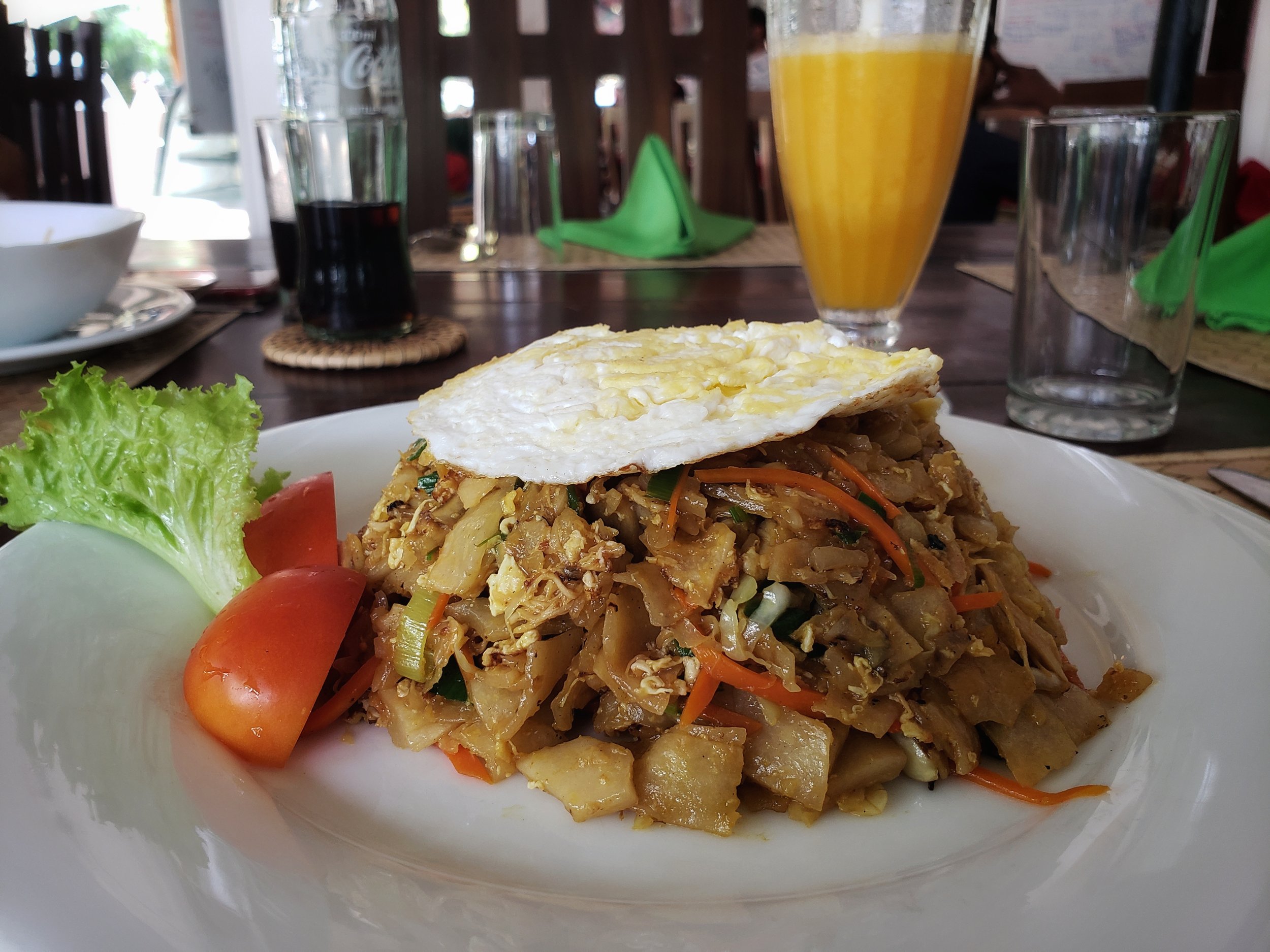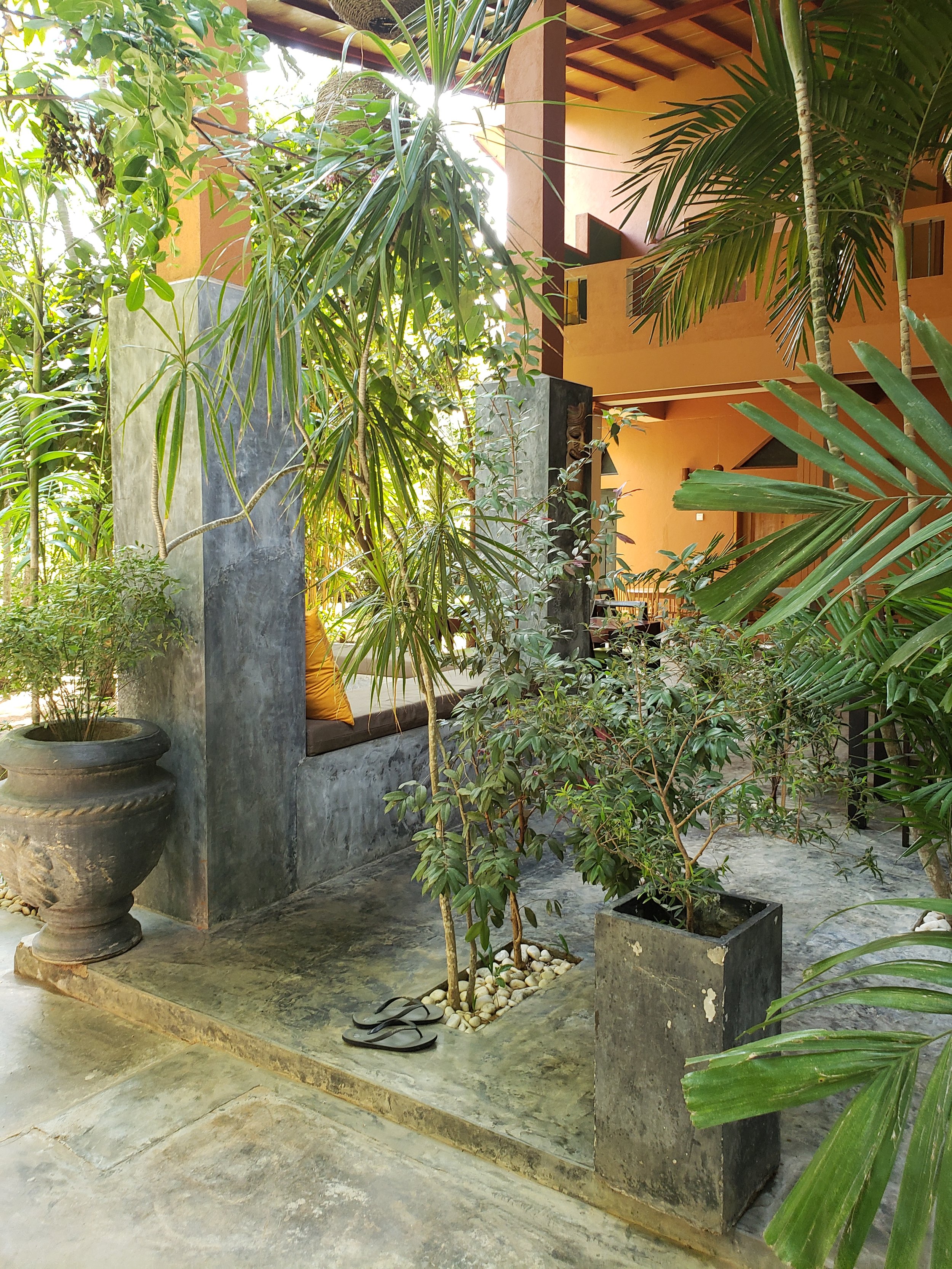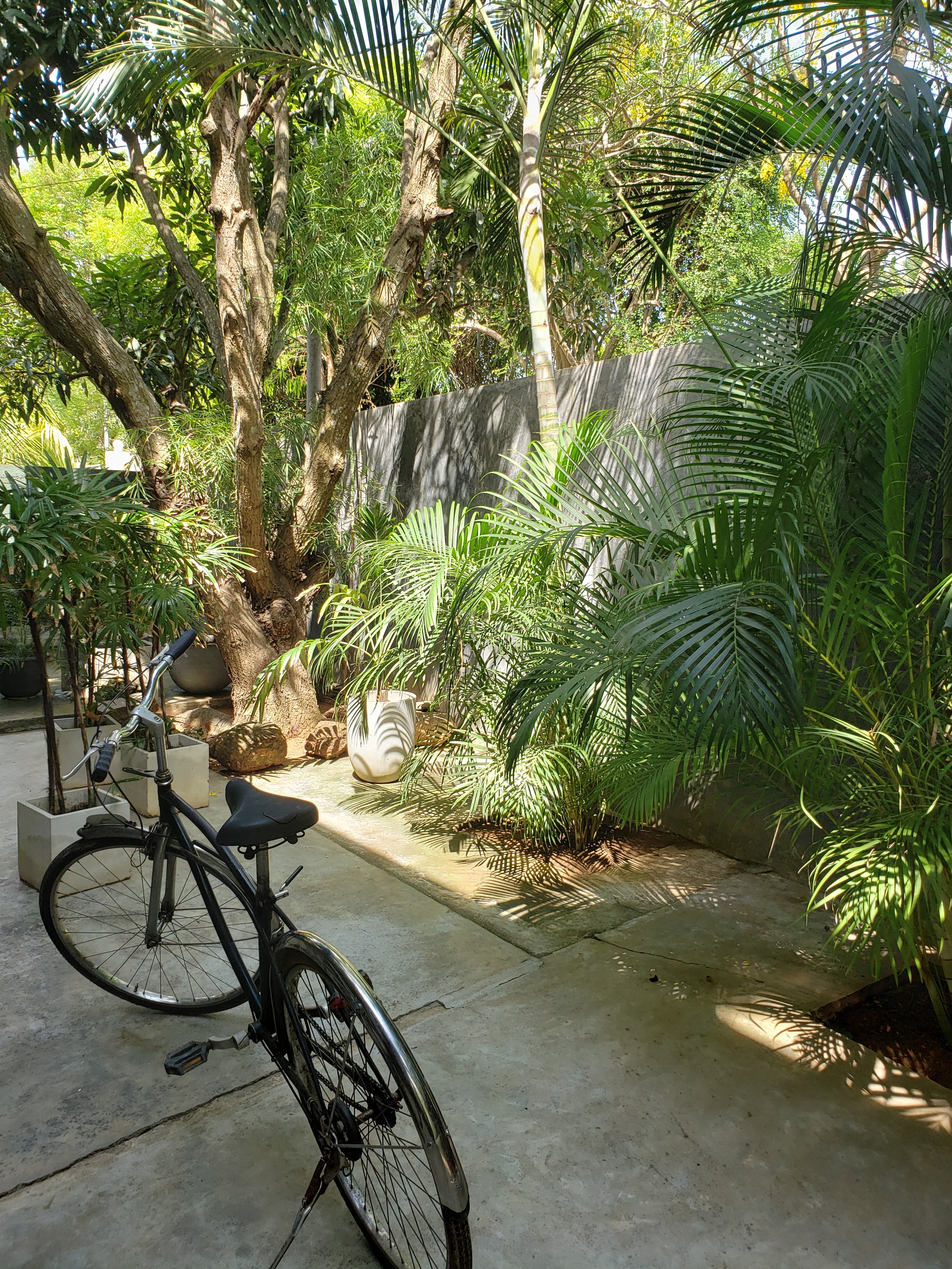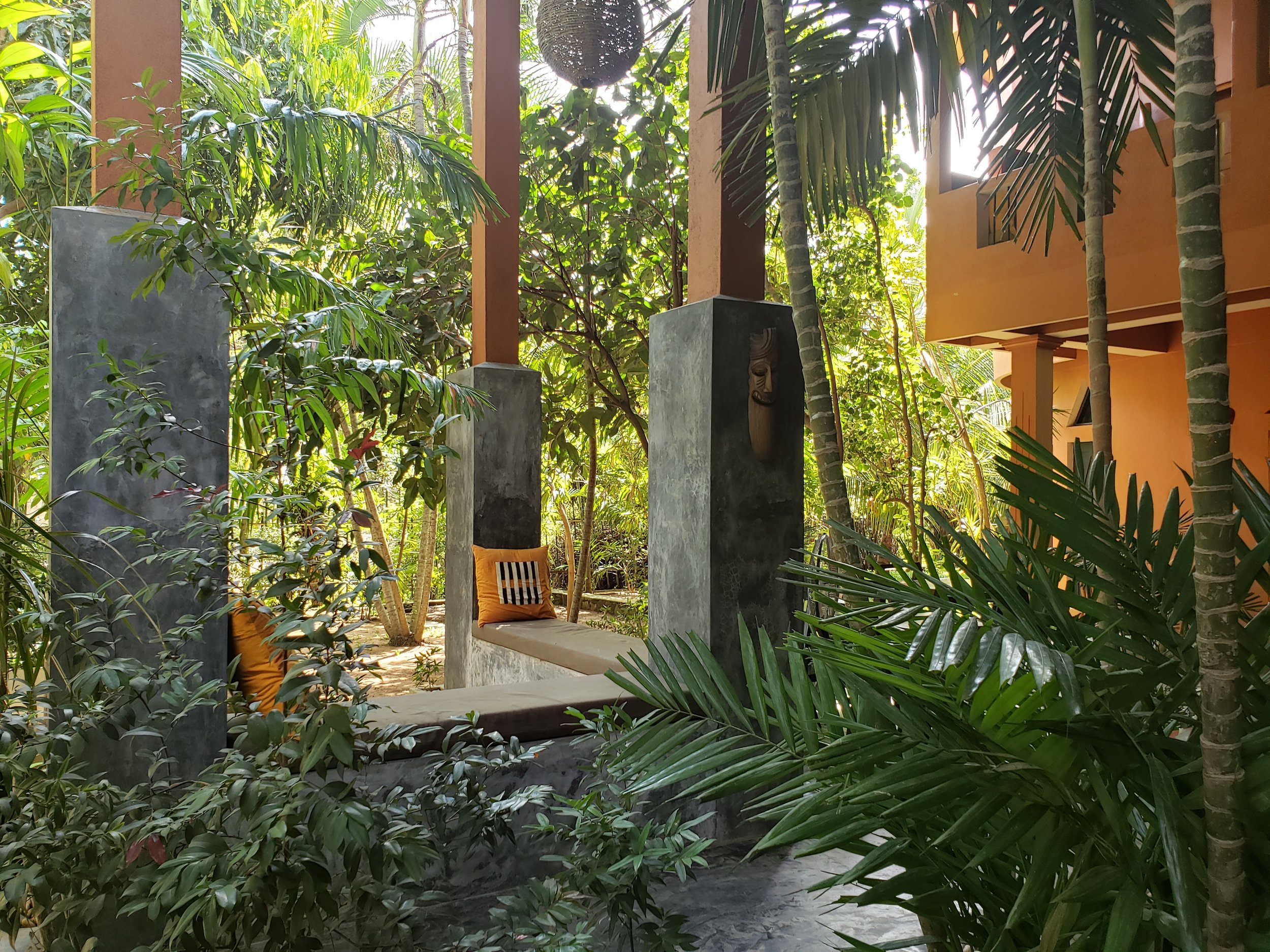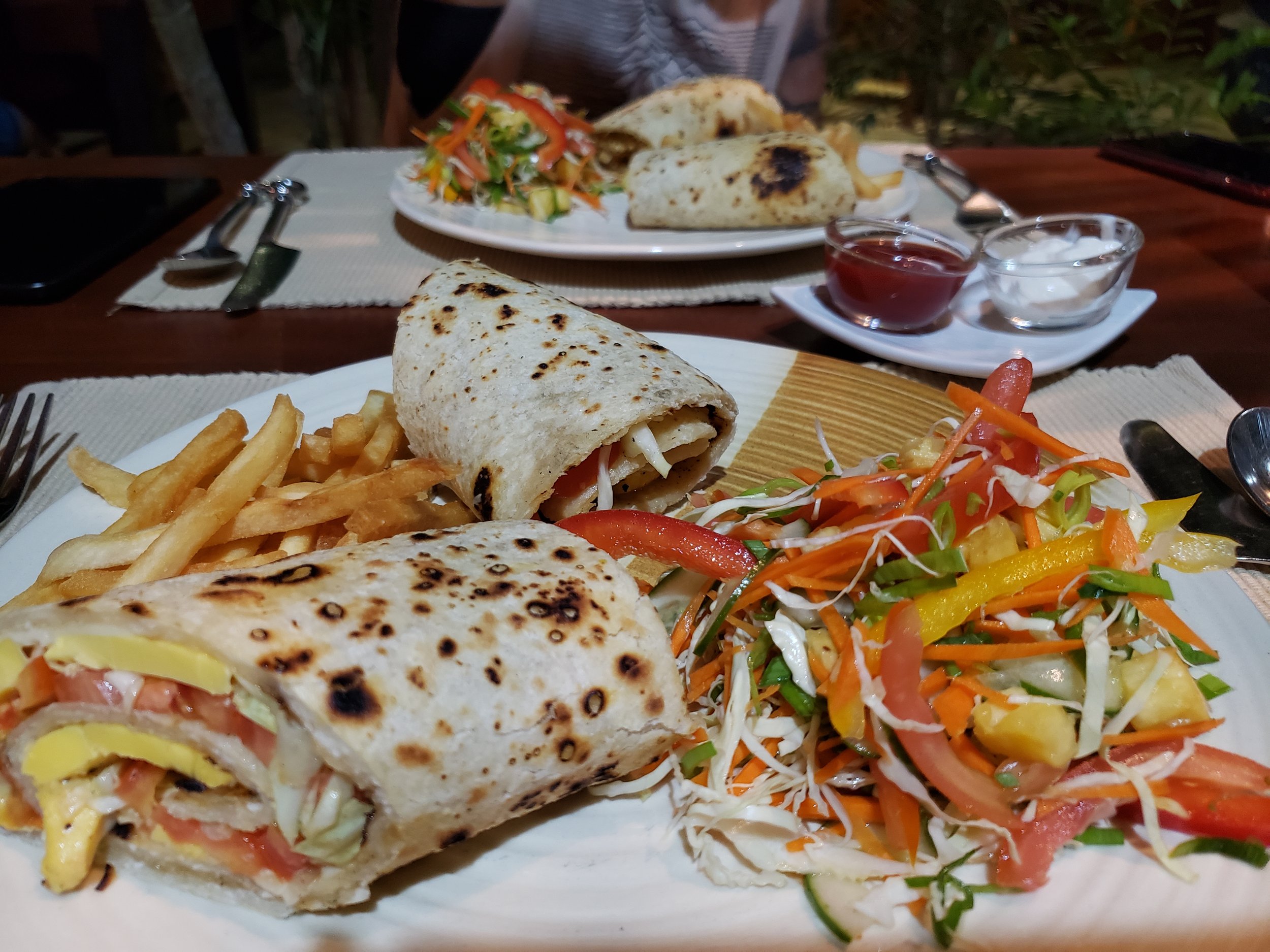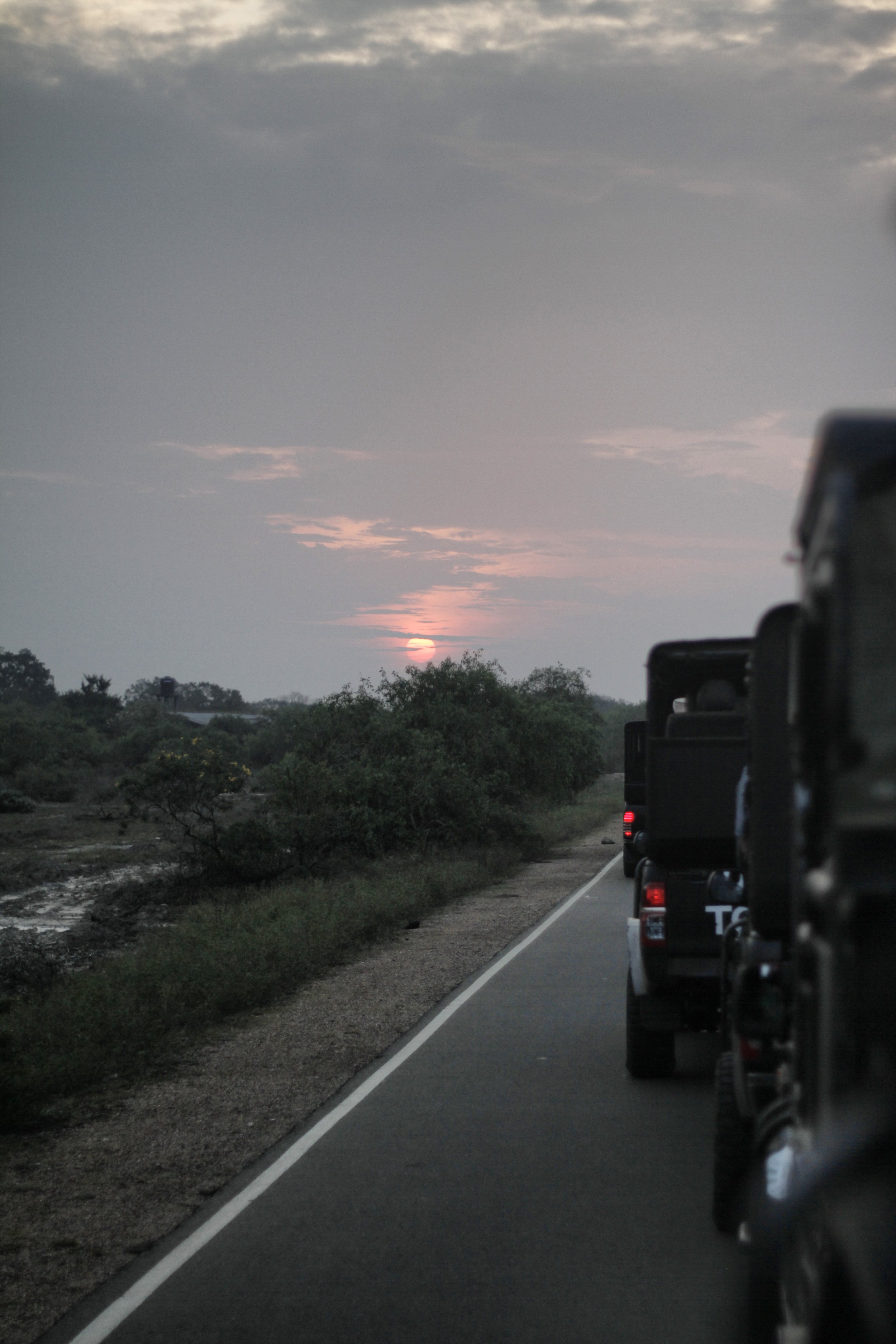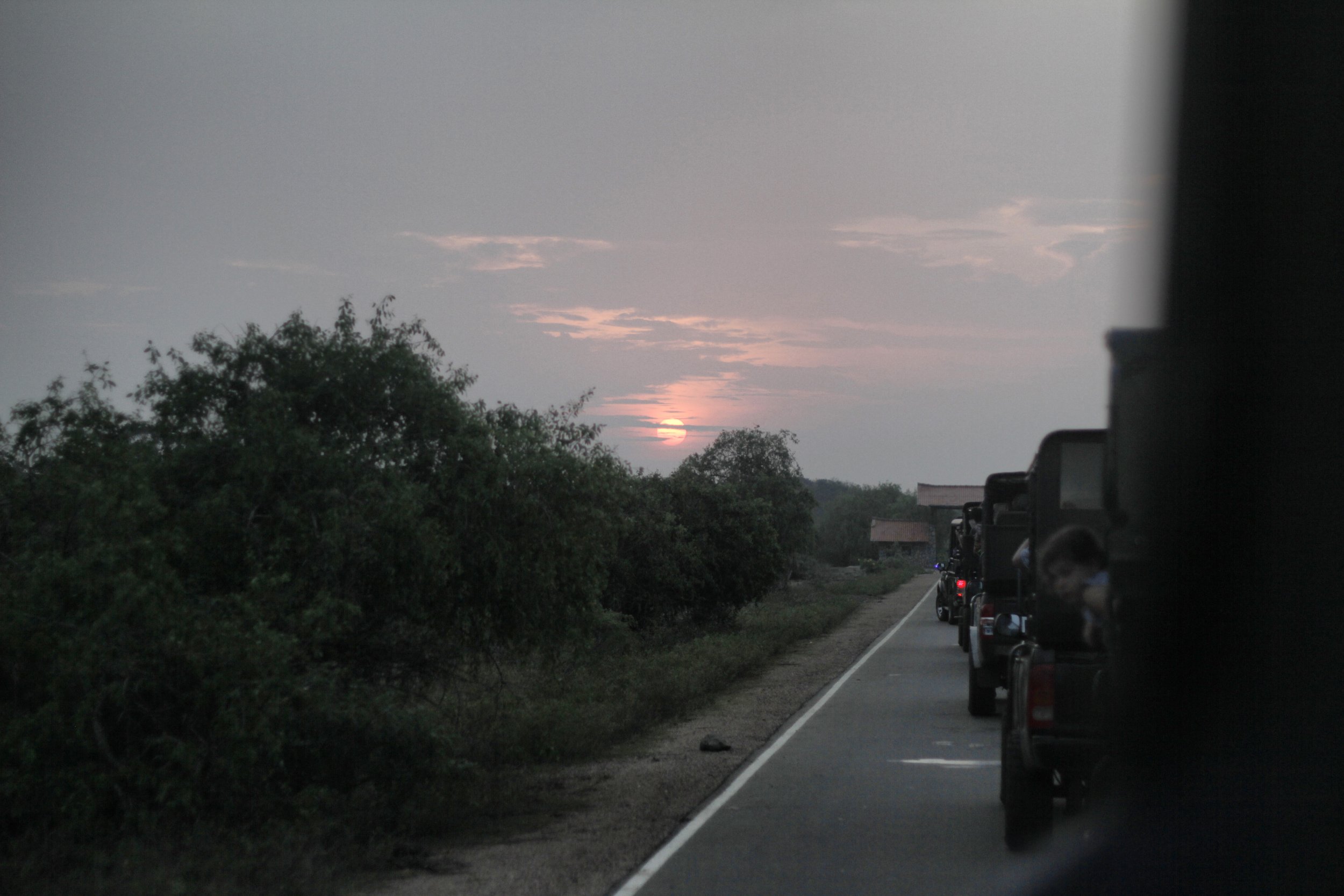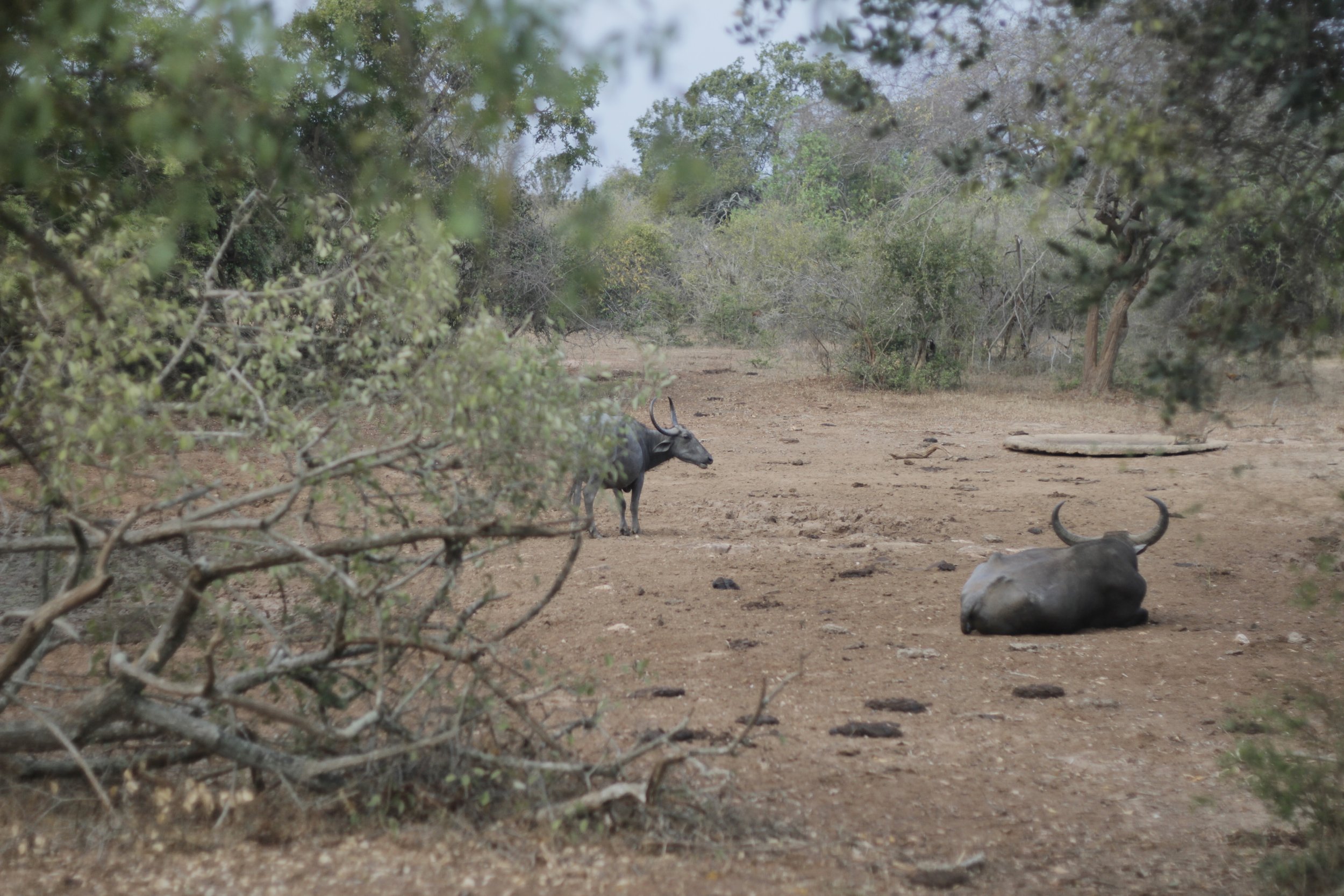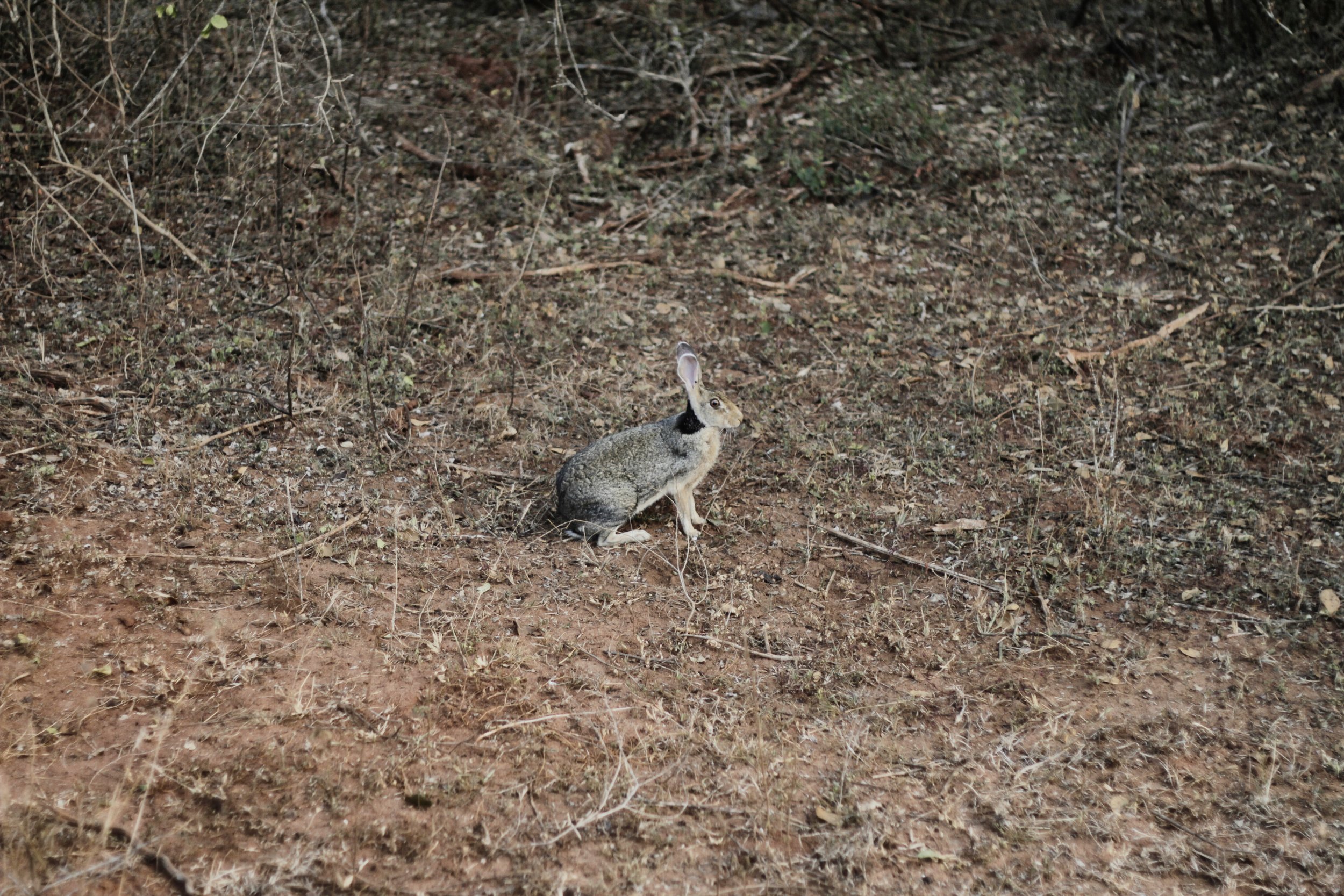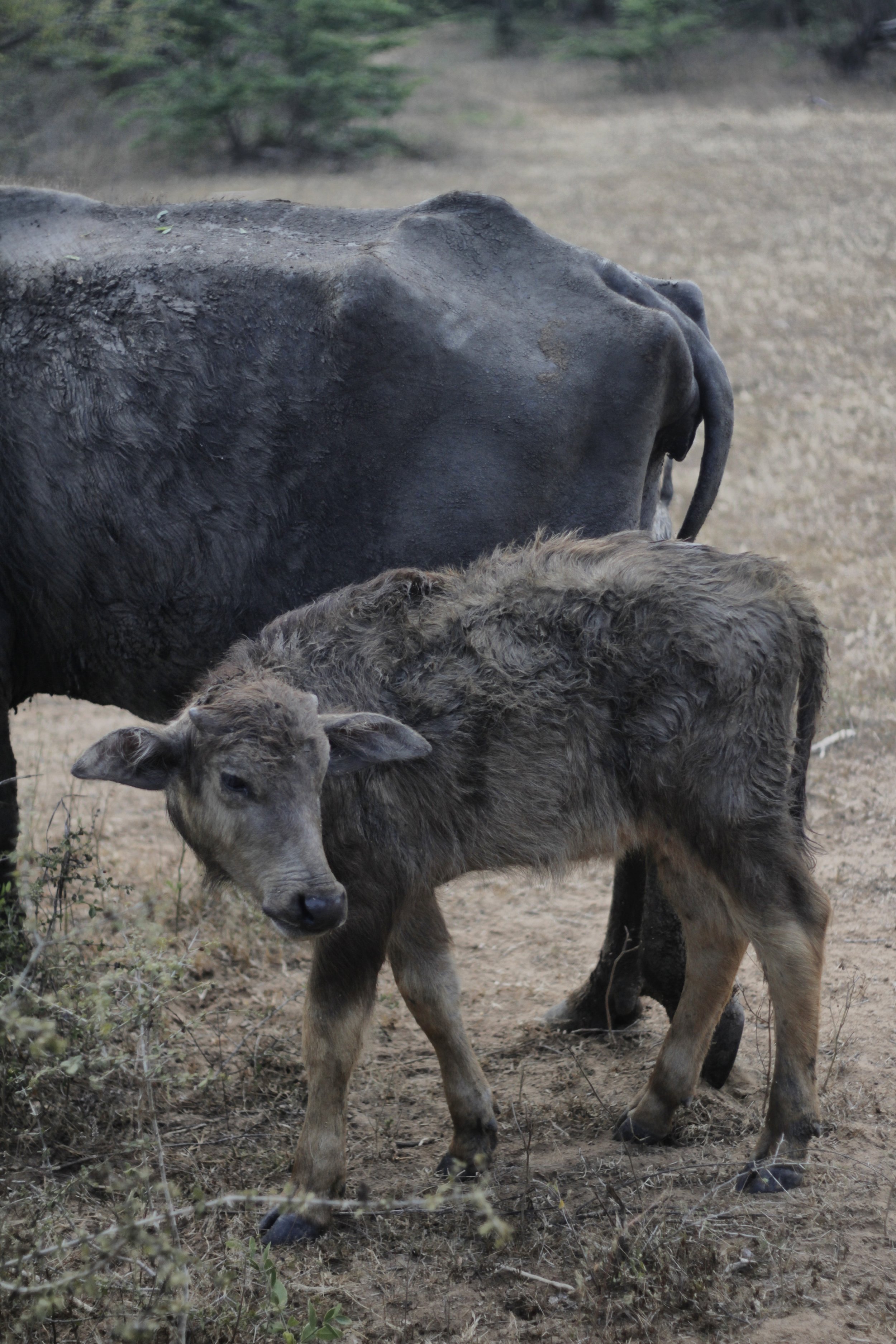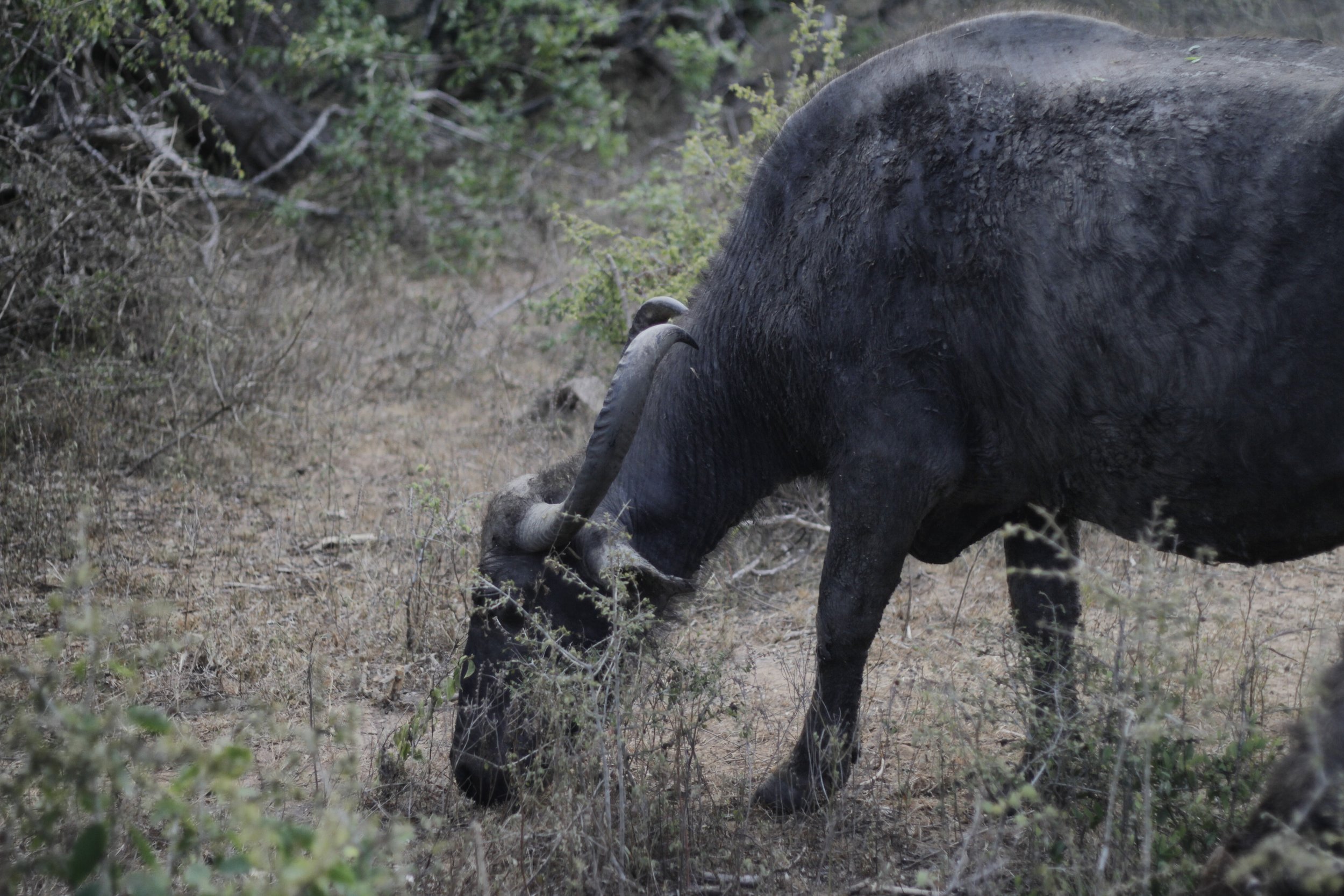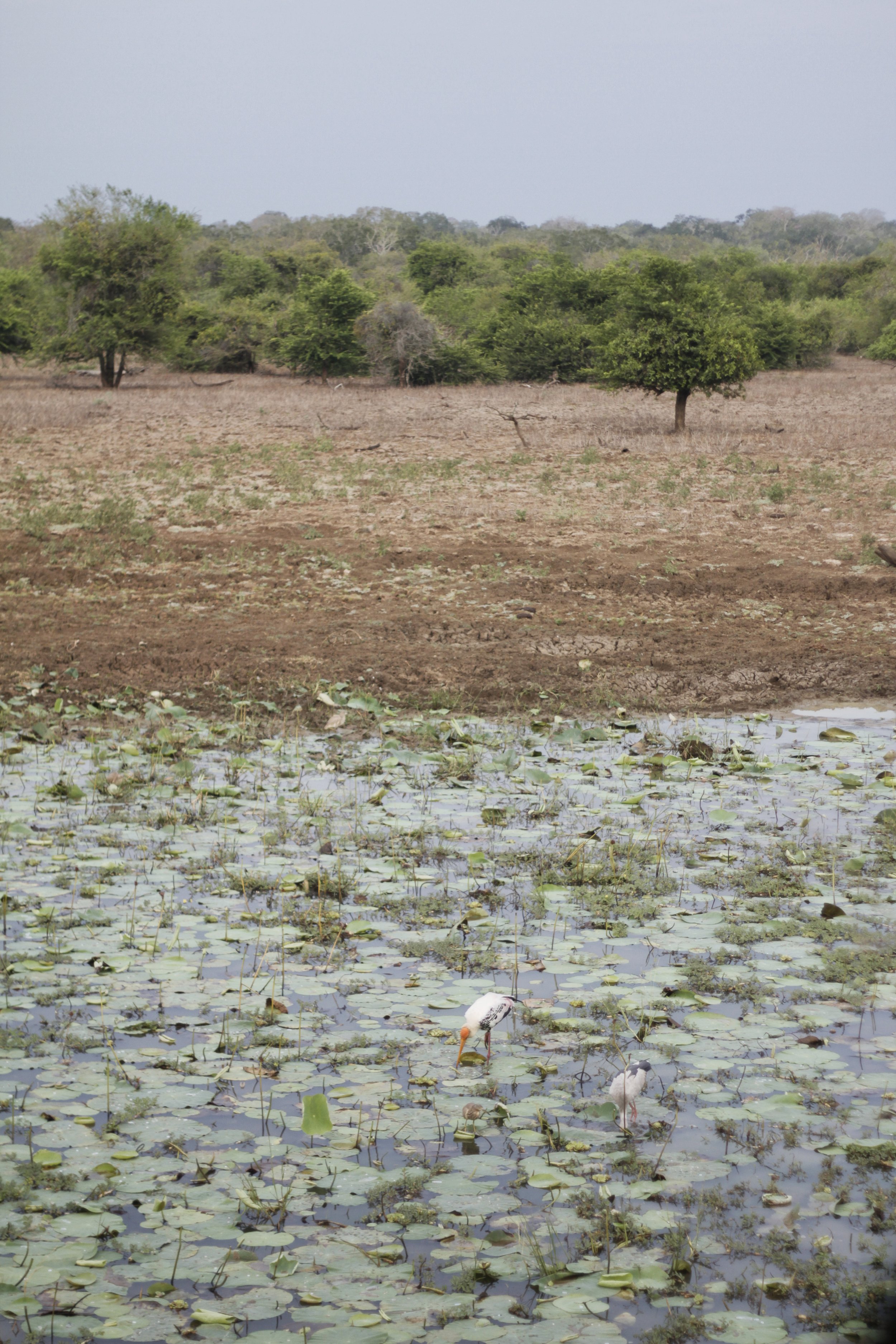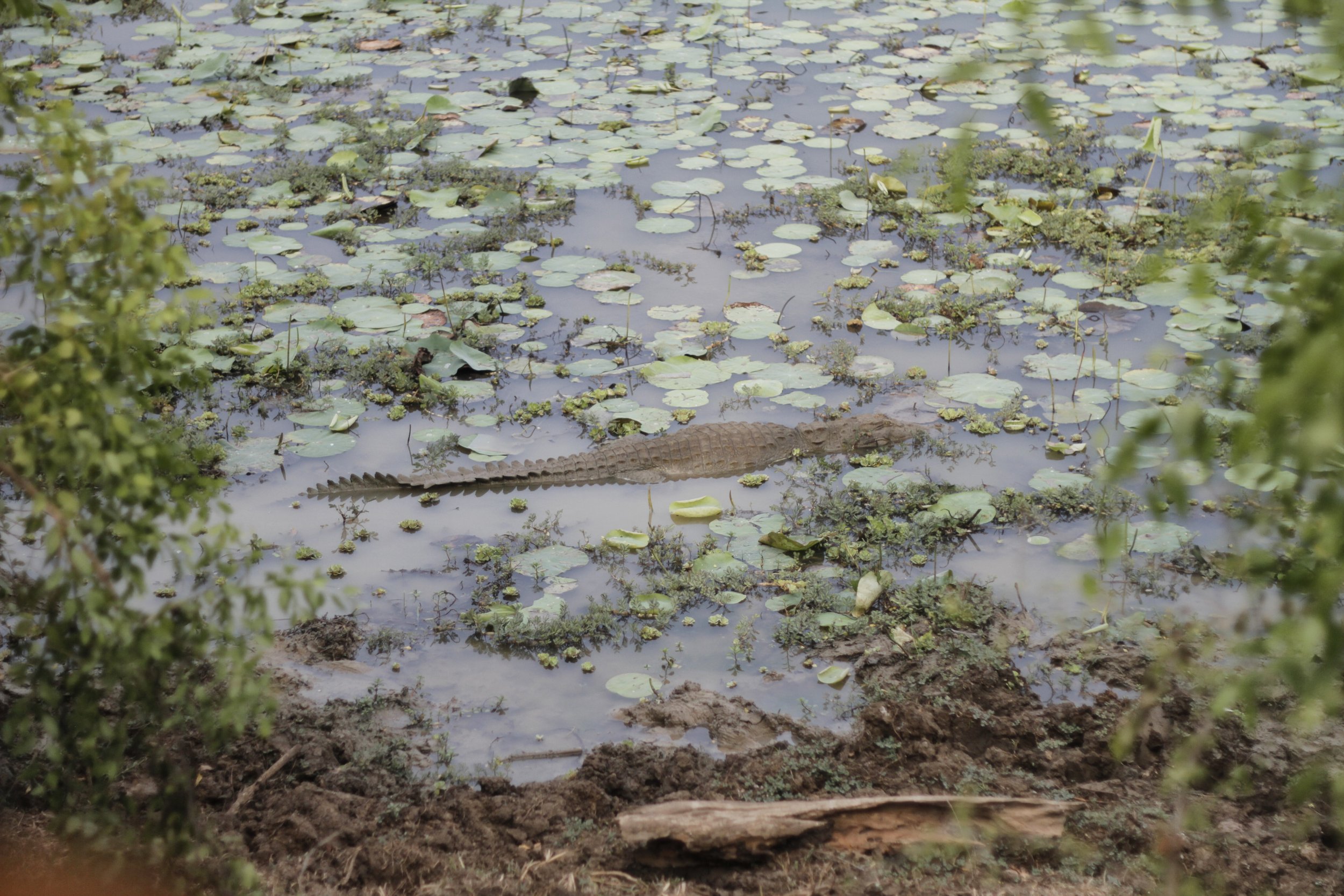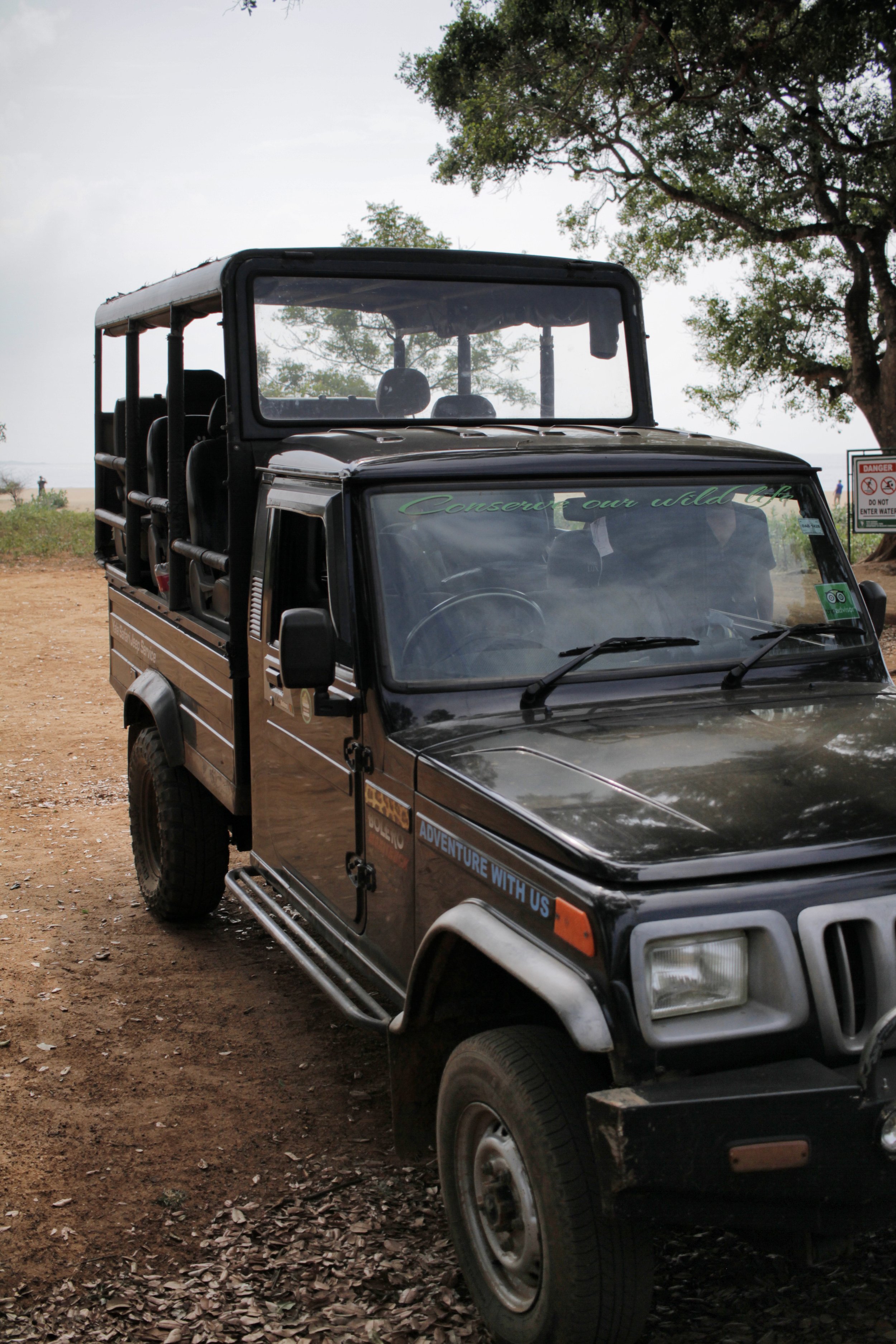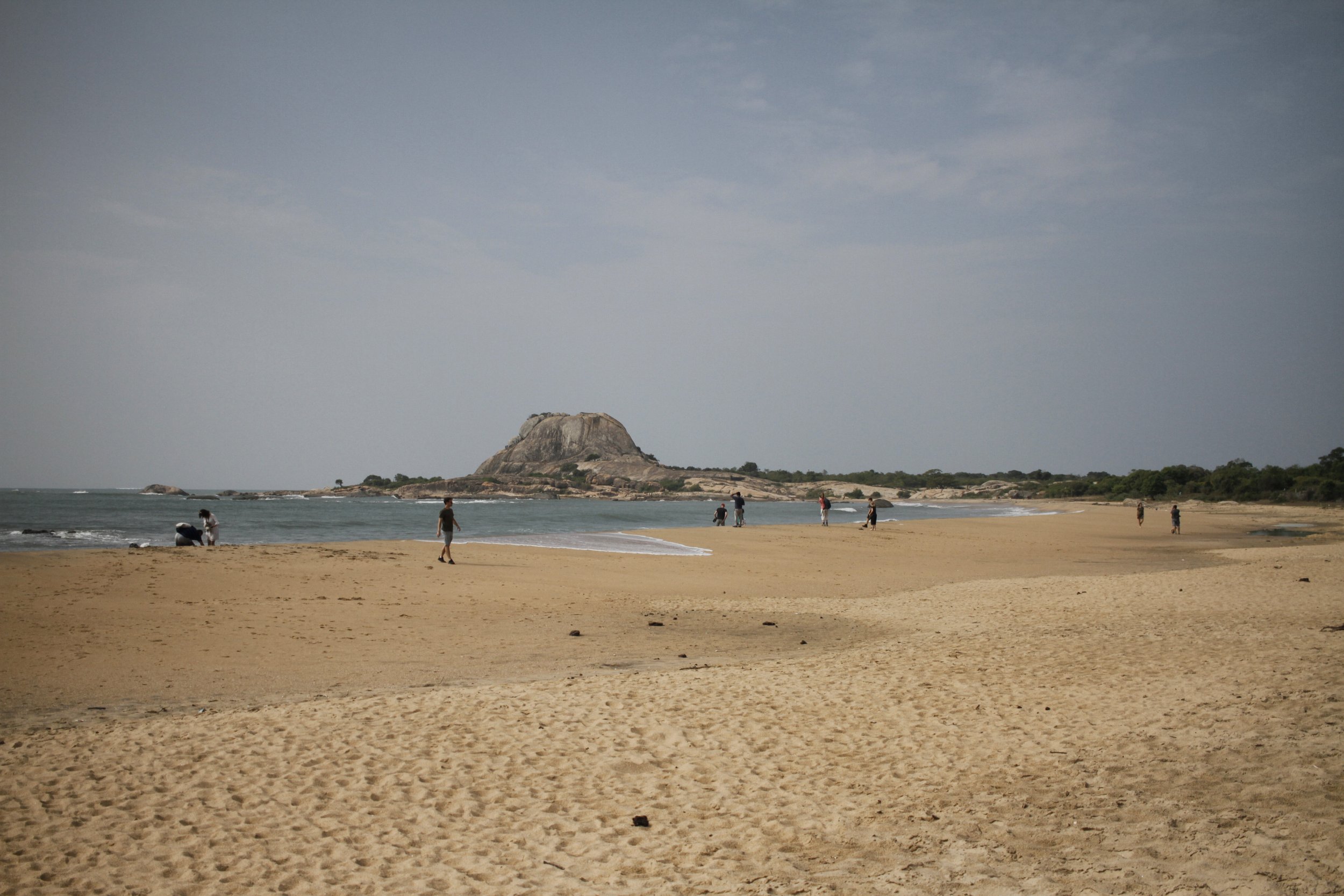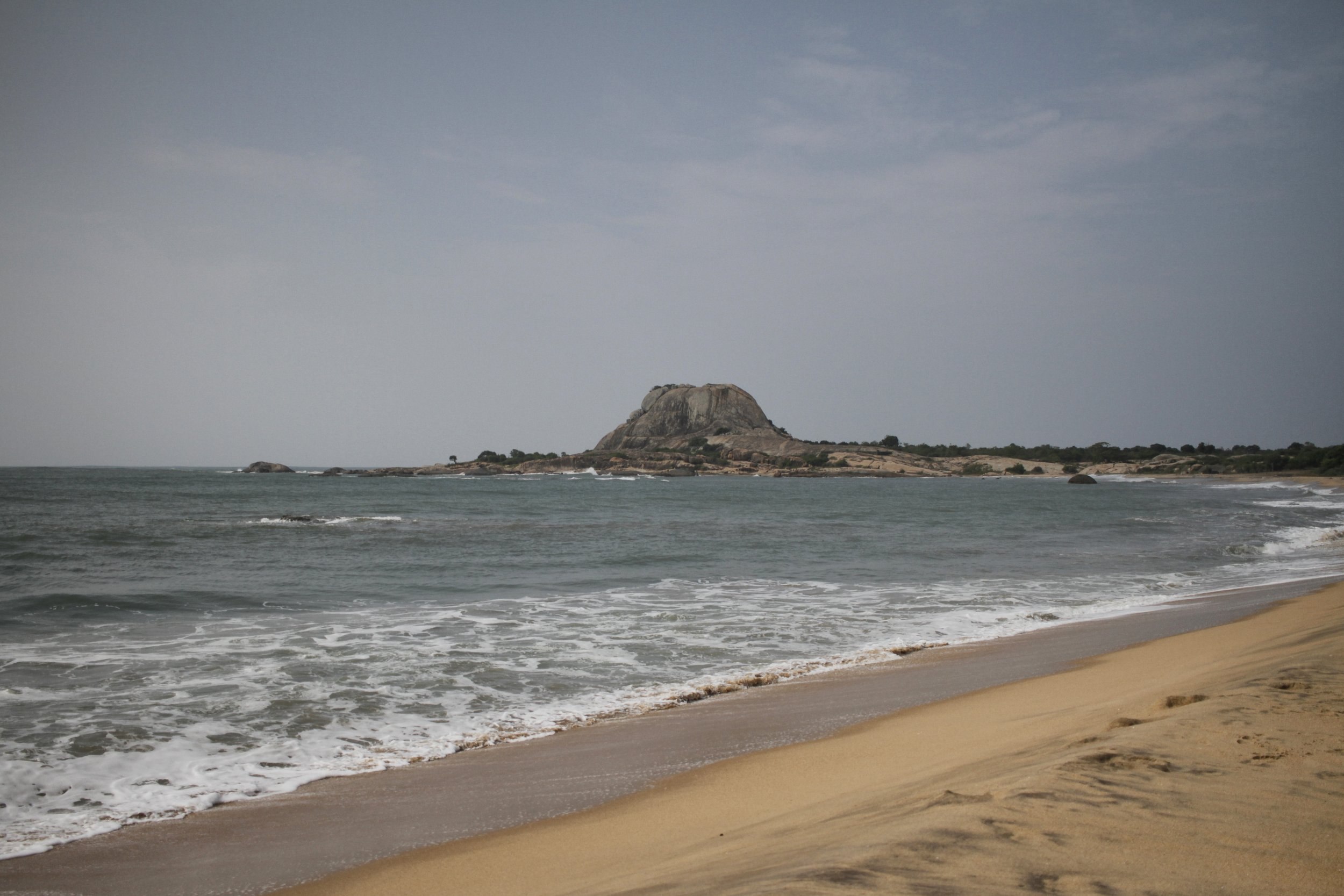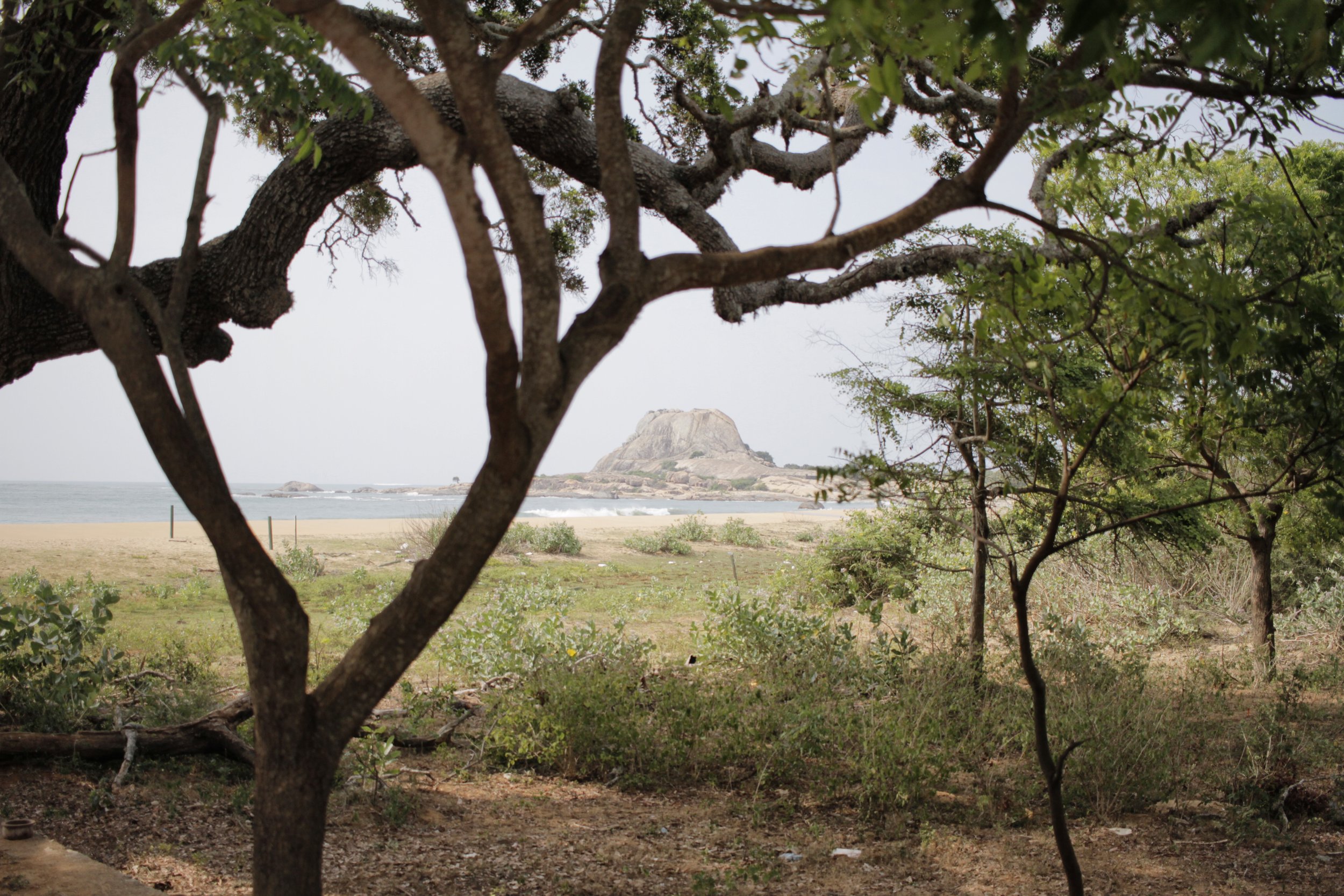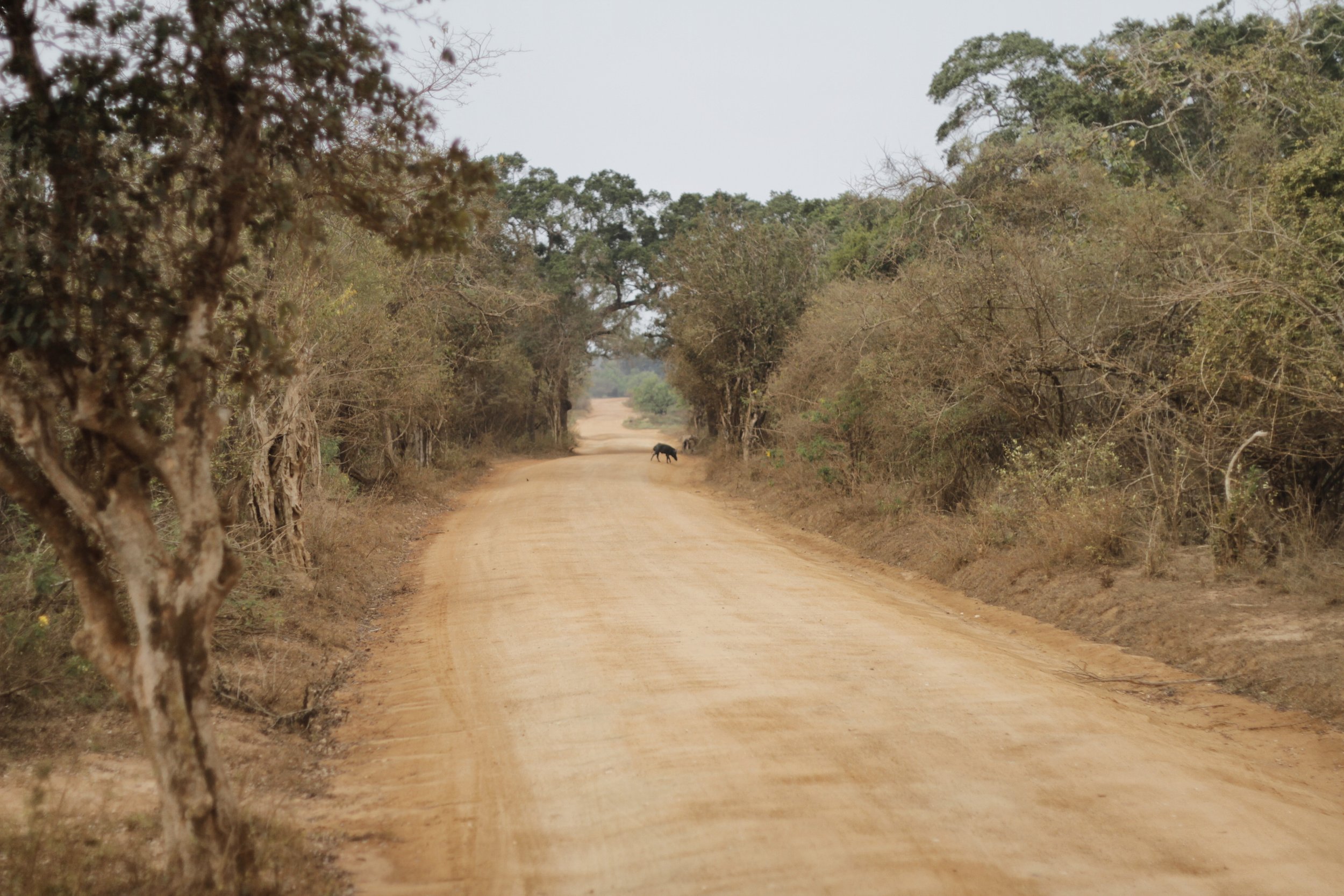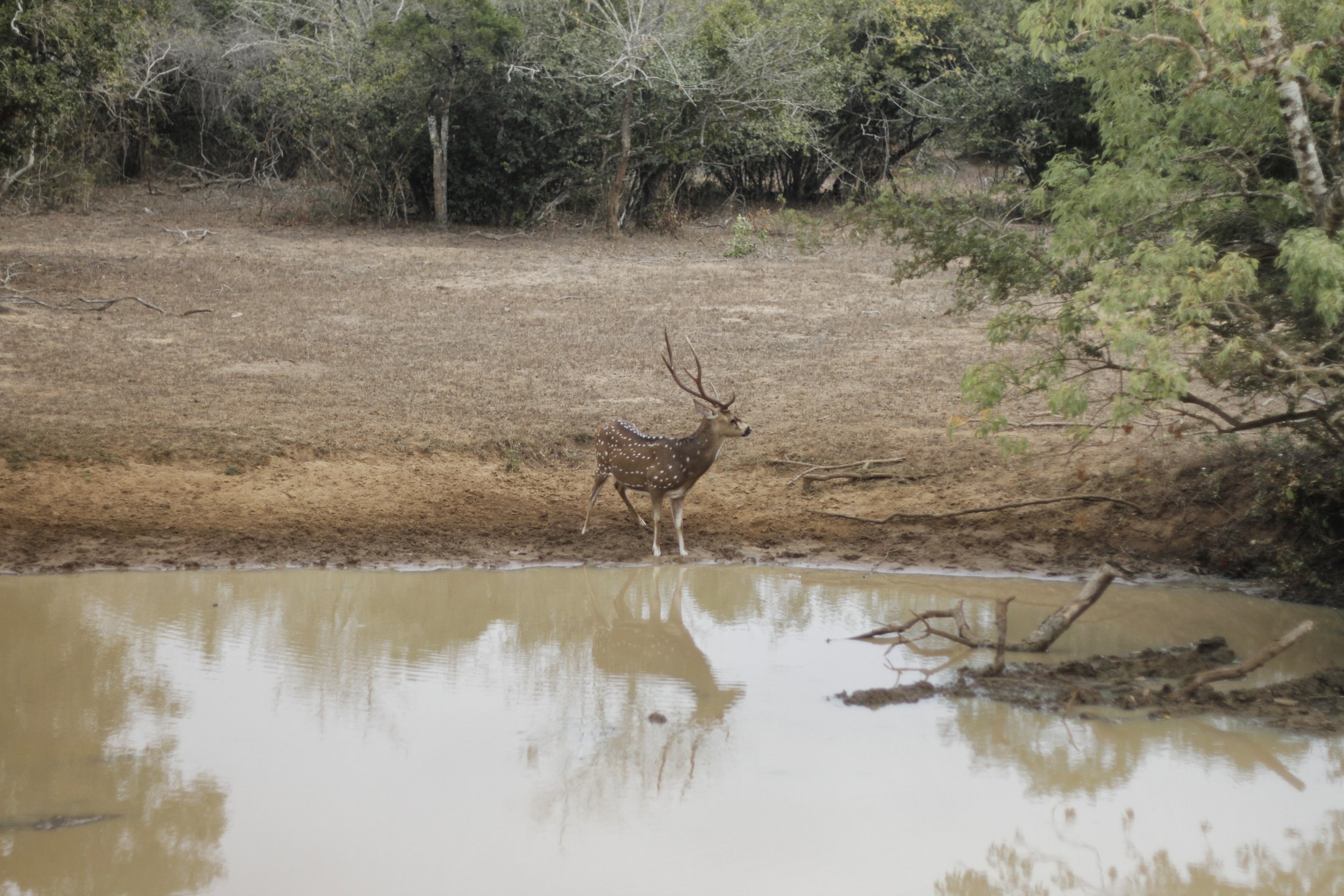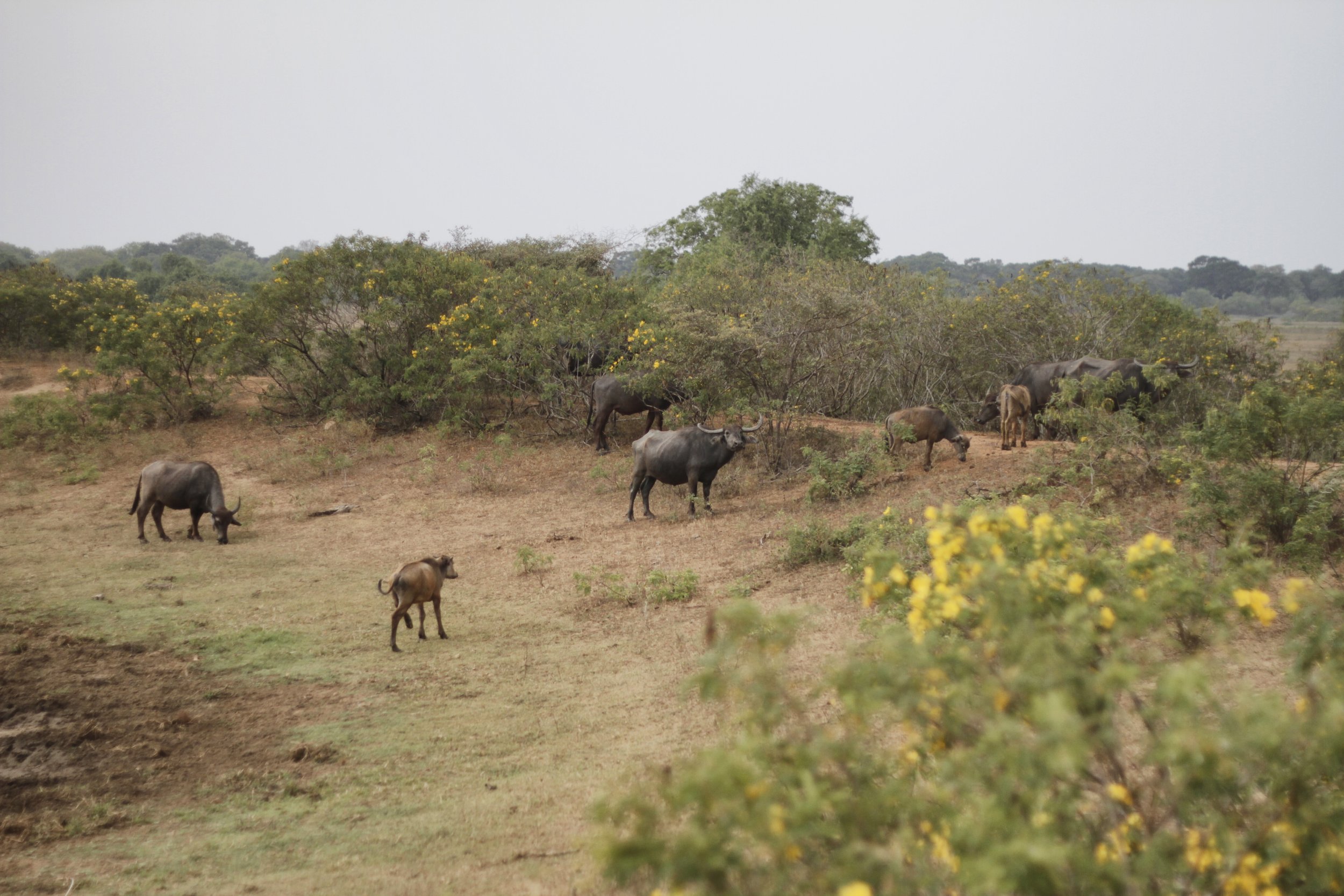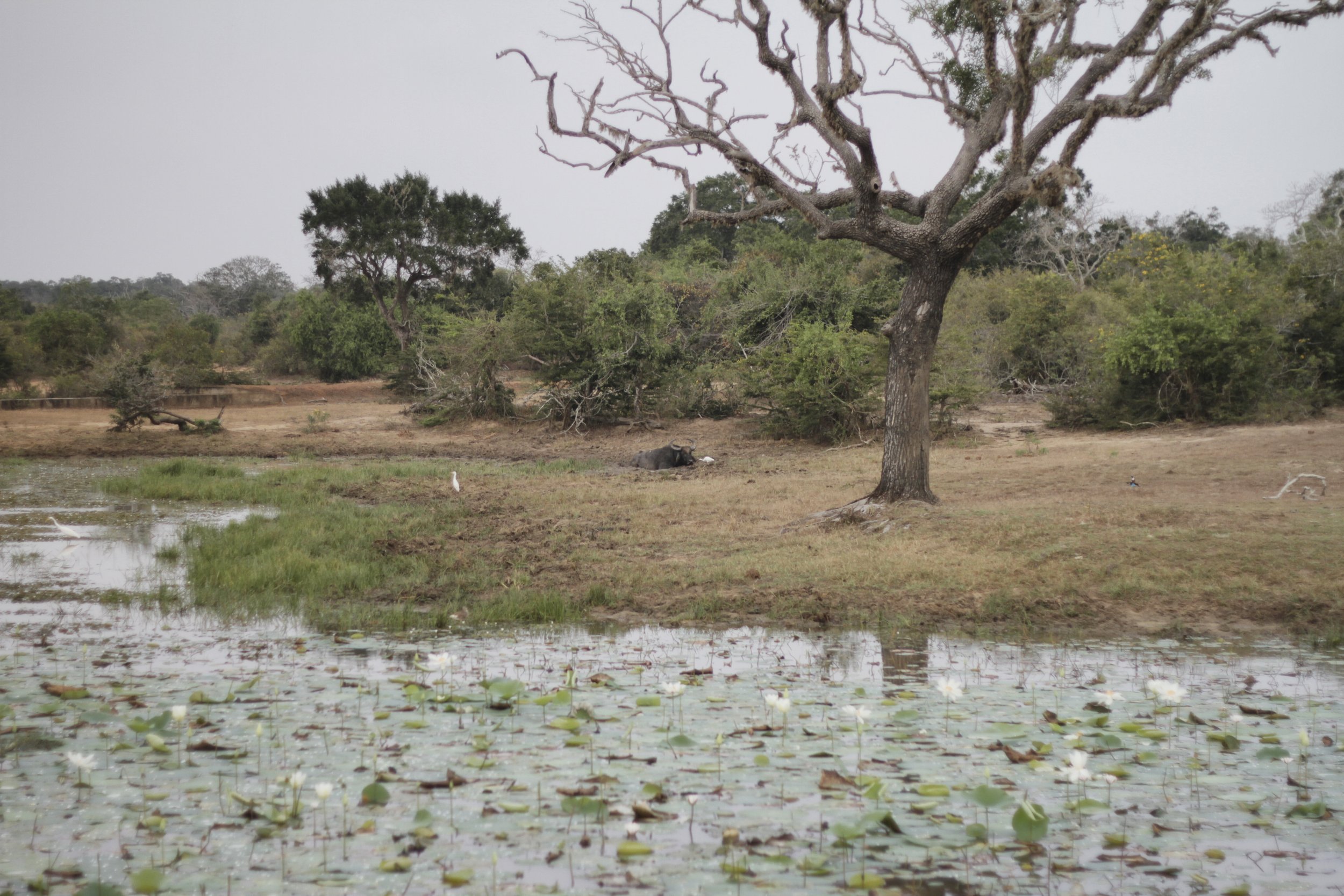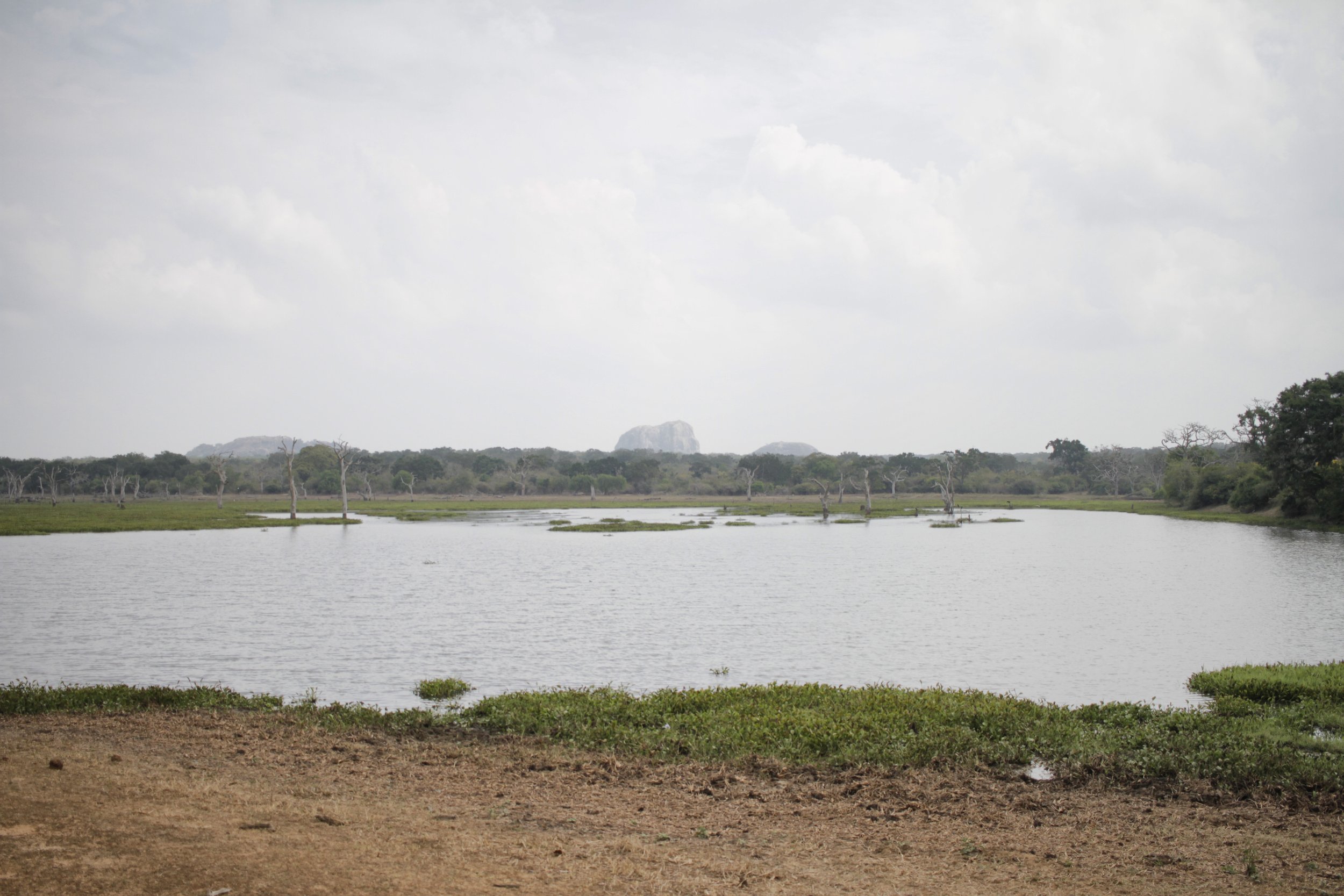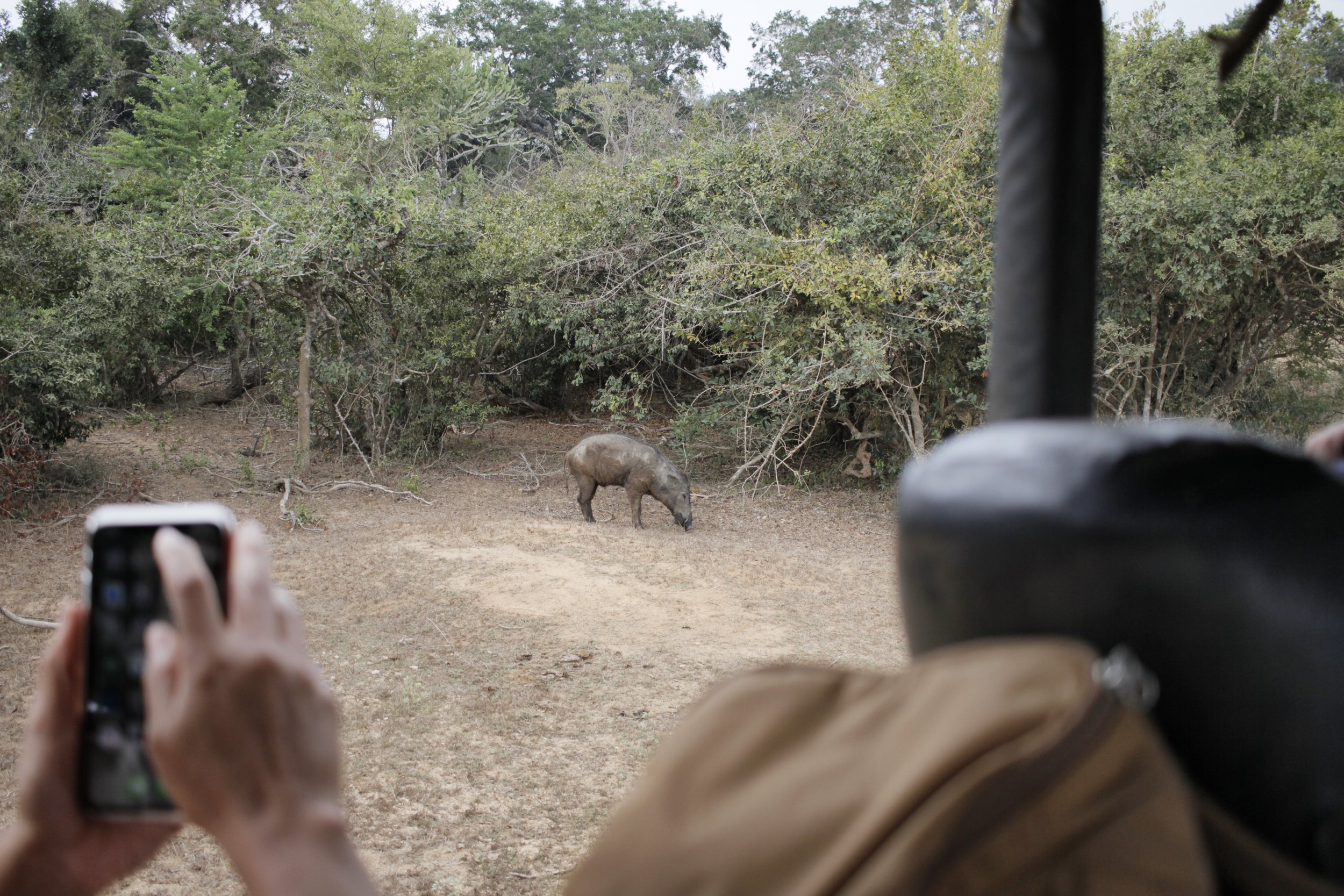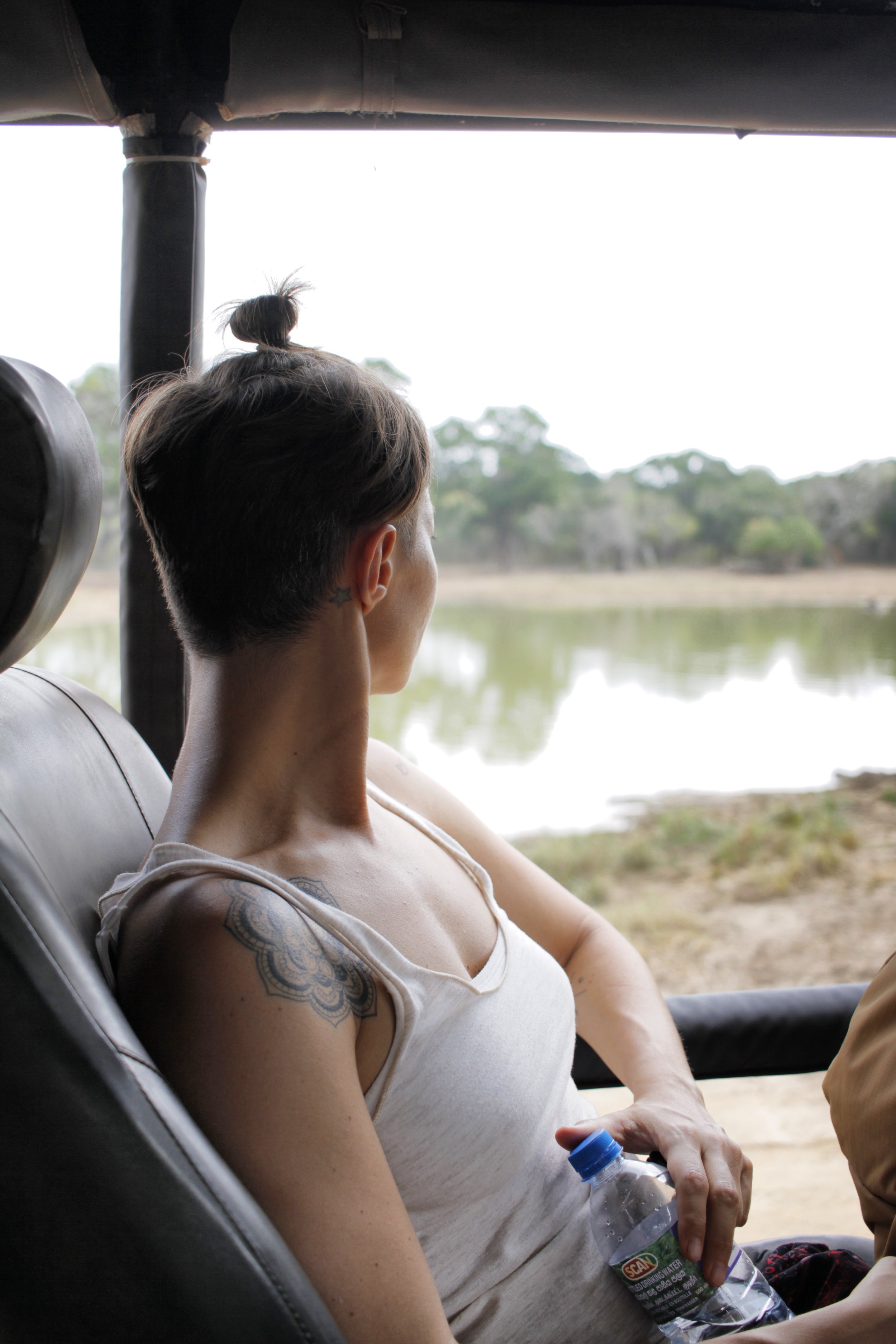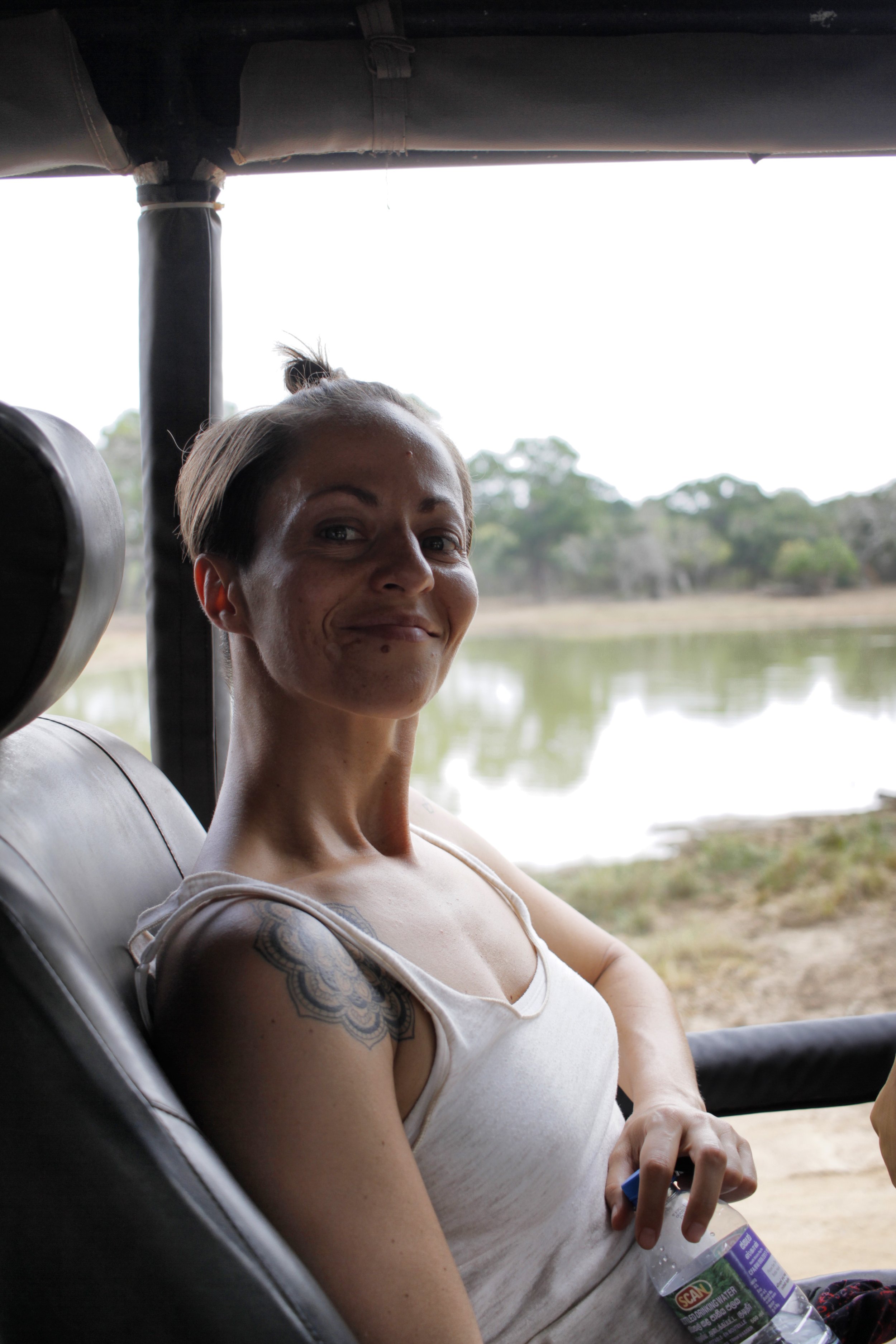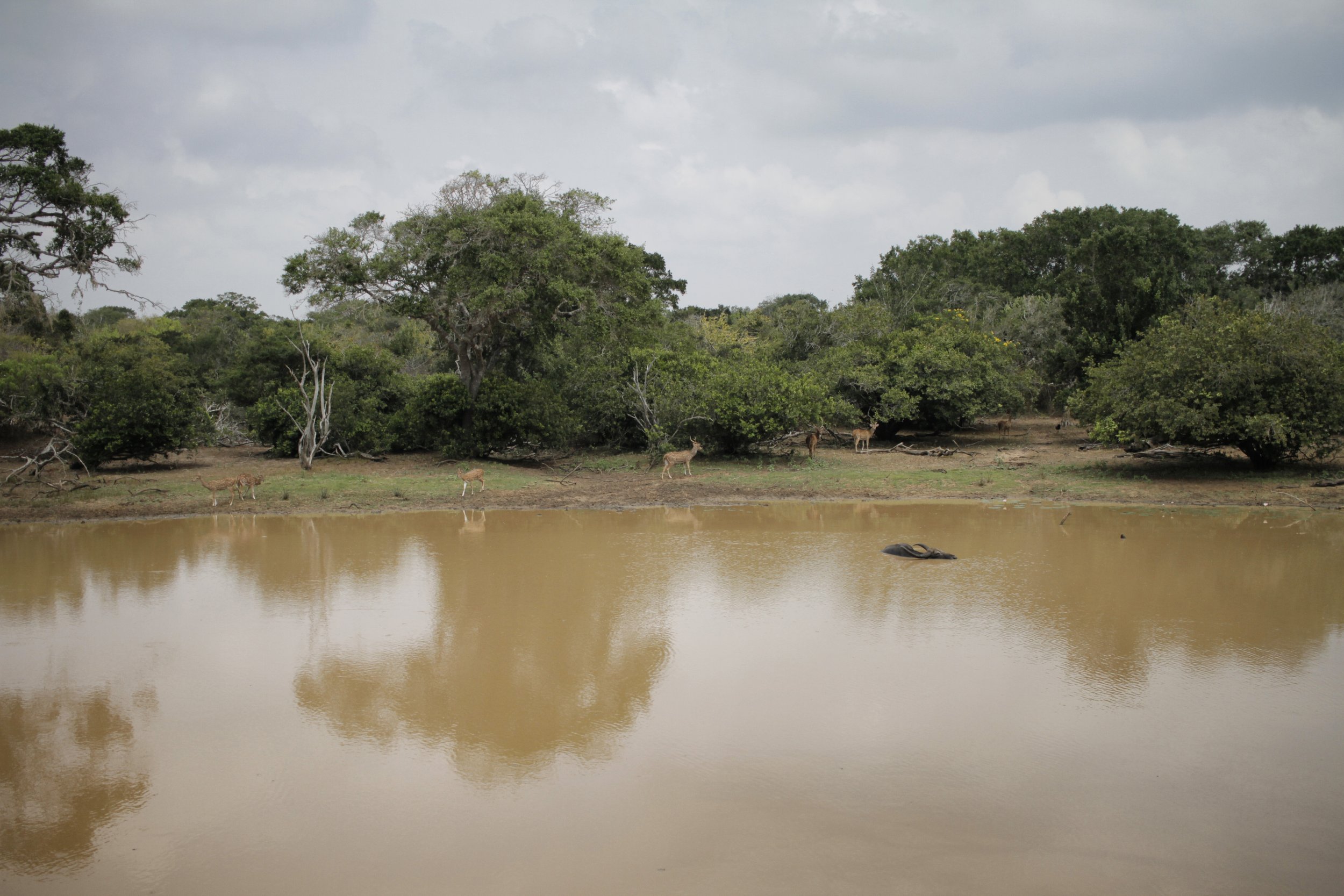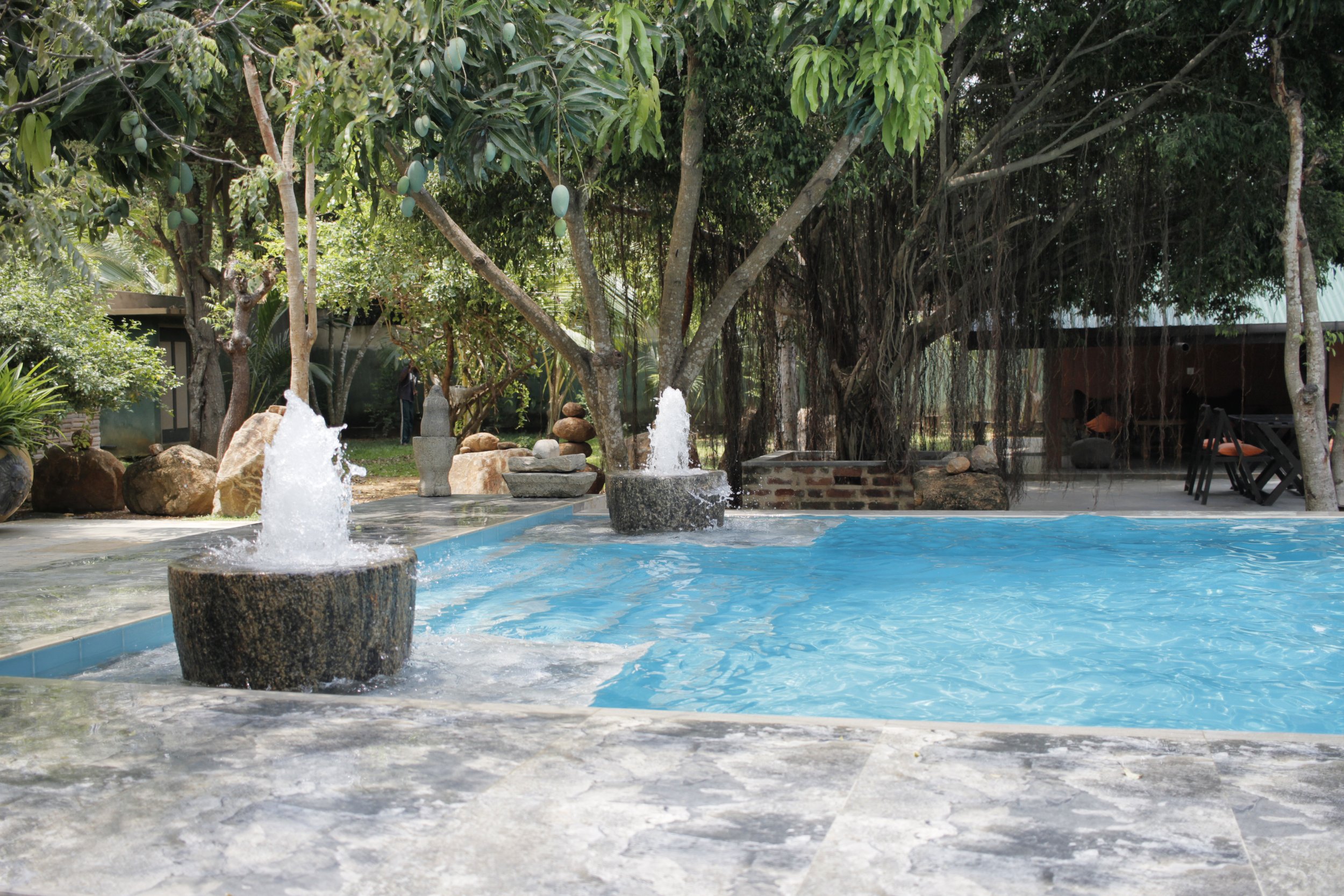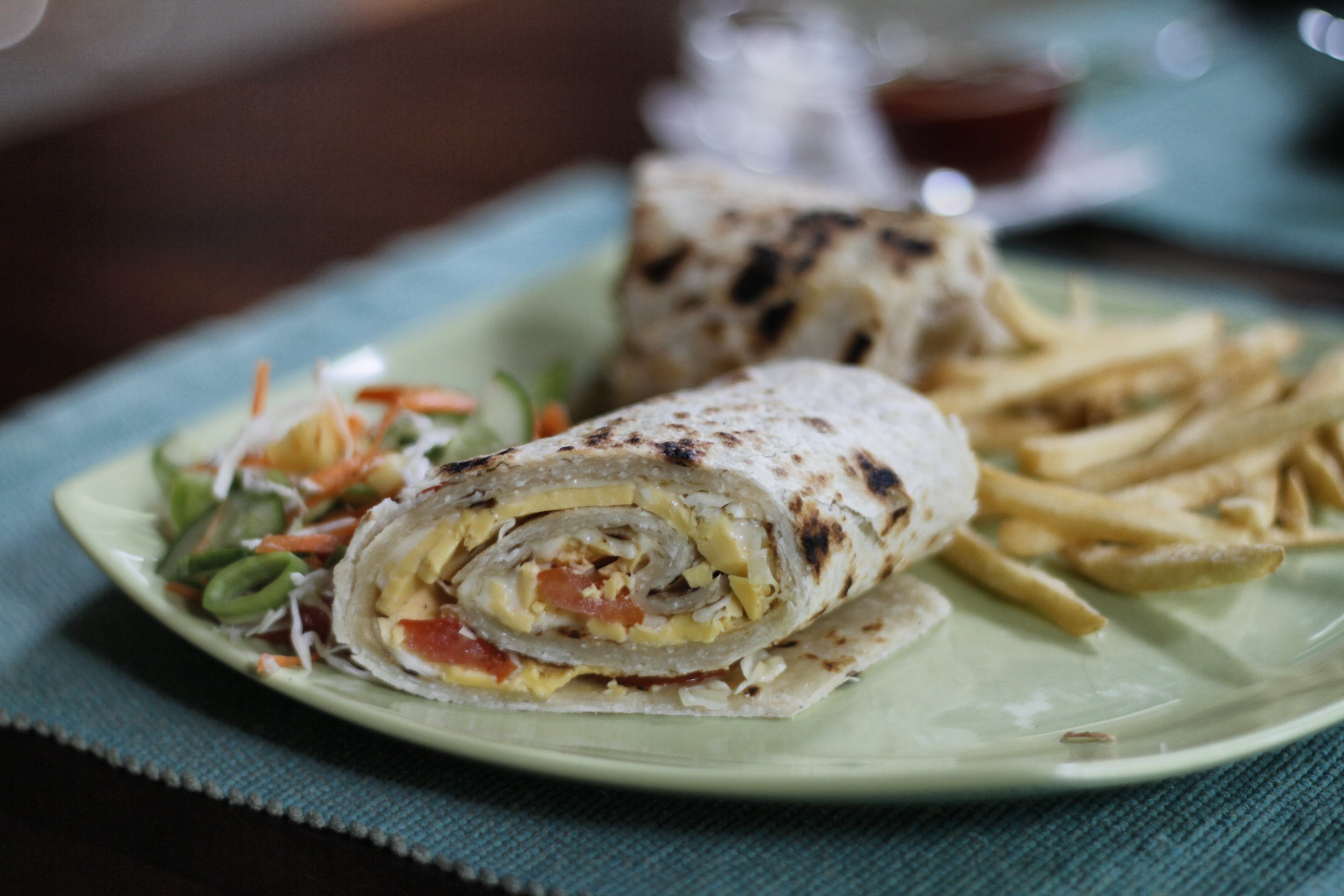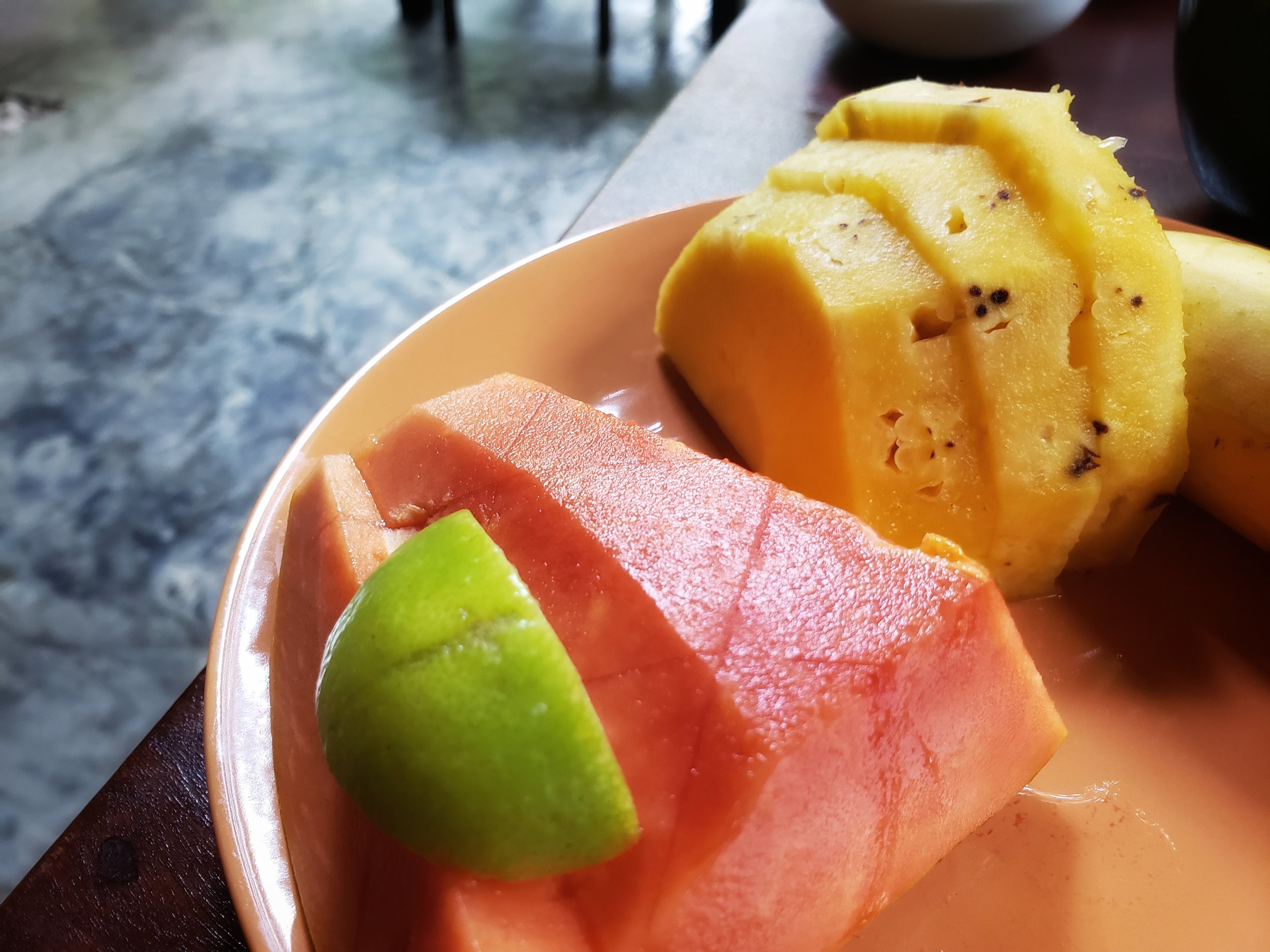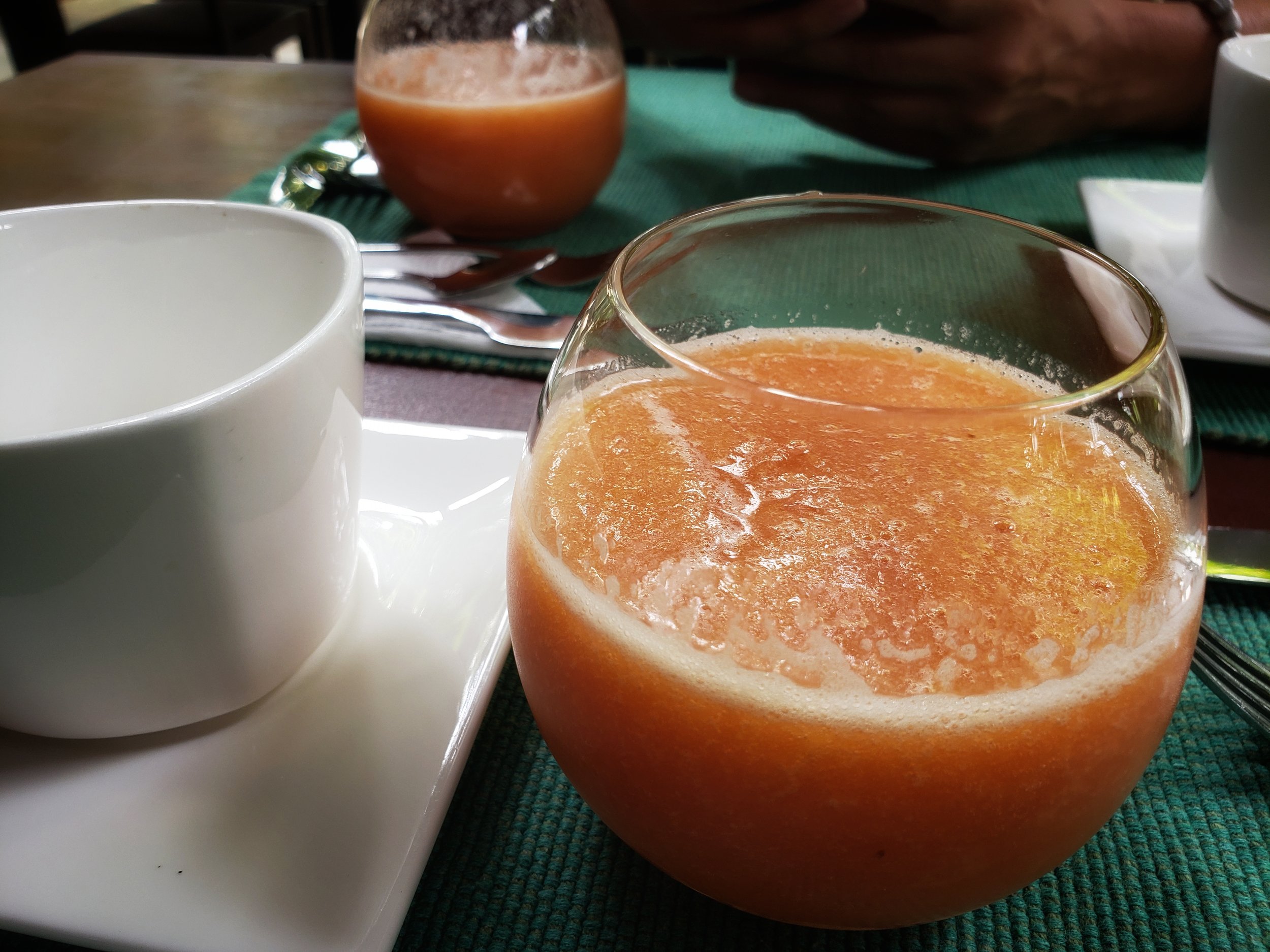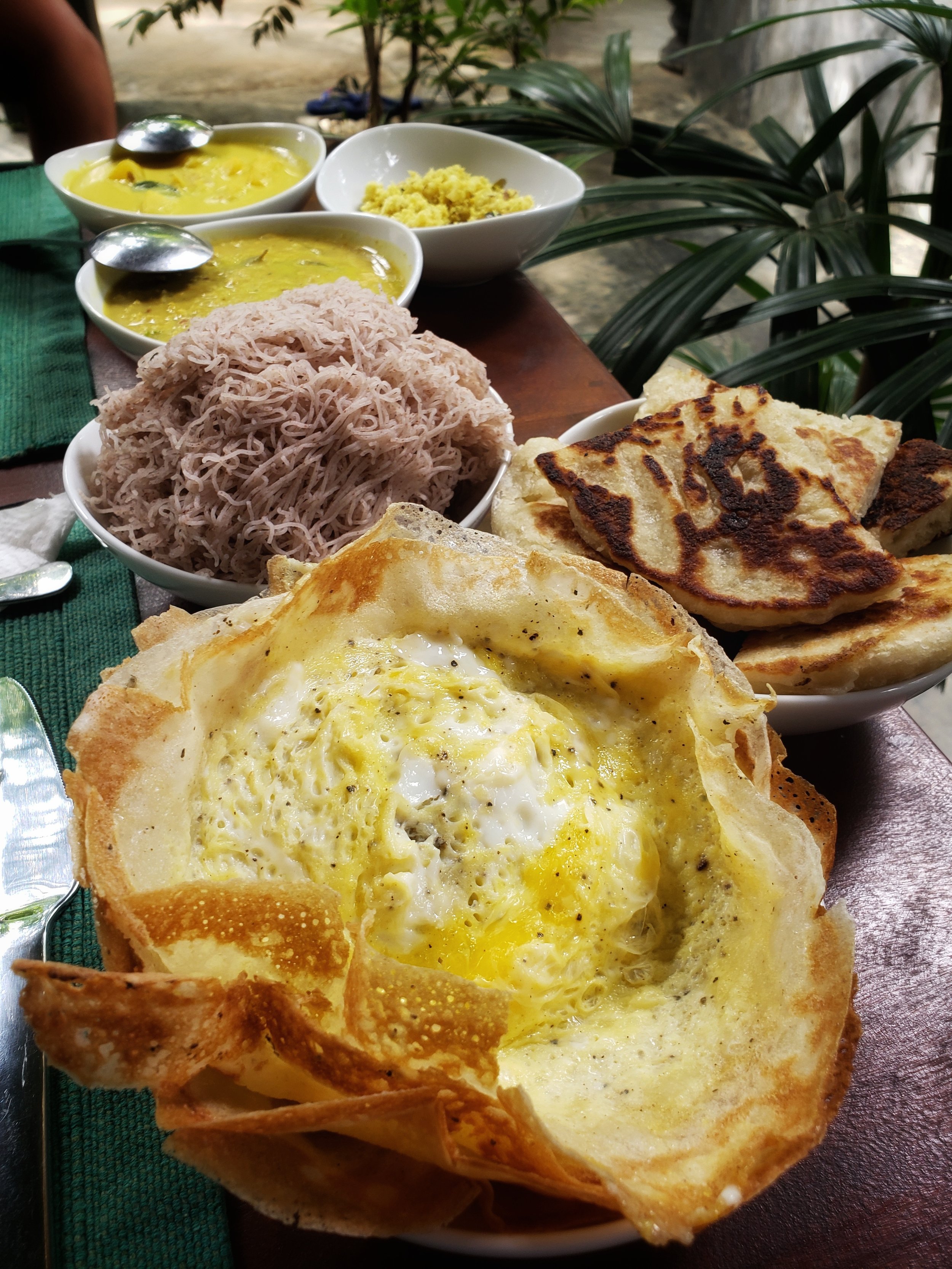Tissamaharama, Sri Lanka
Yala National Park
The island nation of Sri Lanka, nicknamed Pearl of the Indian Ocean and Teardrop of India, is one of extraordinary proportions. It’s this small country’s natural beauty, stunning biodiversity and precious gemstones that give it such a name, along with its teardrop shape just off the coast of India. Sri Lanka also boasts ancient ruins, beautiful beaches and incredible wildlife. Food-wise, it’s known for production of the finest tea, cinnamon, coconut and exotic spices creating no shortage of delicious flavors. Sri Lanka a magical place that only requires an open heart and mind to fall in love.
Tissamaharama was once the capital of the Sinhalese Kingdom of Ruhuna, a region of present-day southeastern Sri Lanka, as early as the 3rd century B.C. but today it feels quiet and gentle, not what you’d expect from a previous capital city. Located at the southern edge of Sri Lanka, Tissa, as it’s often called, is now home to many wildlife reserves, Buddhist monasteries, temples and stunning beaches and waterfalls. It’s a calm town with peaceful energy that offers tranquility to anyone who needs it.
My adventure traveling through Sri Lanka for three weeks began north of Colombo, its capital city, and circled the country clockwise. First up was an unforgettable experience Elephant Watching in Pinnawala, then it was on to the scorching heat of Sigiriya to visit the Eighth Wonder of the World (So They Say) and Ancient City of Polonnaruwa, followed by a magical Elephant Safari at Minneriya National Park. In the weeks to come, we’d also explore Giant Buddha’s, Botanical Gardens & Fire Dancing in Kandy, Nuwara Eliya, known as the City of Light and Ella for its Epic Waterfalls, Train Rides & Jungle Mountains. Lastly, we spent some time in Tissamaharama to visit Yala National Park and finally, the beachy town of Mirissa for the nearby Iconic Old City of Galle, Whale Watching & Stunning Beaches.
Land in Tissa
The drive from Ella to Tissamaharama took about two and a half hours and cost Rs6000, or about $20 USD. After our arrival, it was time to check in at My Village Hotel and grab some food at Calorian Restaurant in town. There, I ordered a traditional Sri Lankan dish of chicken kottu roti, along with mango juice. The kottu roti was filled with chopped roti, chicken curry, scrambled egg, onion, carrot and chillies, Everything was very tasty but fairly overpriced, relatively speaking, at Rs2500 or $8 USD.
After lunch, it was back to the calm vibes of the hotel for pool time and some rest and relaxation. The interior of the hotel was super cute, a respite in a cool jungle setting that offered relief from the hot dusty streets outside its walls.
There were many nooks and crannies to explore and secret spots to hideaway, if needed. The hotel also provided bicycles for use if that was your thing, and soft lounge seating meant for midday napping.
Later in the evening, the hotel offered to prepare dinner. Simple but delicious, the menu offered roti’s with chicken, tomato, lettuce and cheese, side salad and white wine, a Chardonnay, to drink.
With hopes of an exciting morning, we arranged a safari jeep tour at Yala National Park, priced at $32 USD per person. It would be a shared jeep with six other guests.
Safari at Yala National Park
Before the sun came up, the alarm sounded at 3:45 a.m. It was time to get ready for the safari. With a quick cup of coffee and a packed lunch from the hotel, we jumped into the jeep that arrived promptly at 4:30 a.m. After picking up two other couples, one Chinese pair and the other, Dutch, we were off to the park. Once we arrived, we pulled in and waited inside the jeep while our guide purchased our tickets.
Giving visitors a chance to witness the diverse wildlife of Sri Lanka, Yala National Park is the second largest national park in Sri Lanka and one of the most visited in the country. Located in the southeast of Sri Lanka hugging the Indian Ocean, Yala was named a wildlife sanctuary in 1900 and a national park in 1938. Ironically, the park was initially used for hunting for the elite under British rule.
After sorting out our tickets, which took some time, we were on the move again. Just as the sun began to poke out through the cloud covered sky, the jeeps began to line up one by one at the entrance, engines running.
Feeling like we were about to race off into the sunrise, our jeep slowly crept forward, entering the park after handing off our tickets. From then on we were pretty much off road, bumping and banging along, eyes peeled, looking to catch any form of wildlife.
Yala is home to 44 varieties of mammals and 215 bird species. Among its more well known residents are a high concentration of leopards, elephants, sloth bears, sambars, jackals, spotted deer, peacocks and crocodiles. The best time to visit falls between February and July when water levels are quite low, bringing animals out into the open.
Right away, we got lucky and ran into animals like birds, peacocks, rabbits, wild boars, monkeys, water buffalo and mongoose. Every time the guide would spot an animal he’d slow down and pull over, describing each one, their habits and the surrounding landscape.
Combining a nature reserve and national park, Yala is split into five blocks, or portions, totaling over 320,000 acres of protected land. Currently, only three of those portions are open to the public with land made up of forests, shrubs, grasslands and lagoons. And because of its sheer size, you’re likely to be exploring on your own, without bumping into any other jeeps.
Weather-wise, Yala is hot. It’s a hot, semi-arid environment despite its lush green appearance, particularly during monsoon season. Temperatures typically range from 79°F to 86°F with most of the rain occurring during monsoon season between September to December.
Throughout the park, there were also multiple lakes where many of the animals would gather. We were able to see birds and crocodiles among the lily pads.
The guide was very respectful and didn’t get too close or disturb any of the animals. And luckily, the paths were already very close to the wildlife so that we didn’t have a hard time viewing each animal.
Lunch at Yala Beach
After a few hours of exploring Yala Block I, our guide drove us to Yala Beach to rest and enjoy lunch. He pulled over, parked and we all grabbed our packed lunches, grabbing a seat wherever we could find. Our guide was nice enough, offering everyone fresh fruit and tea. For lunch, the hotel had packed a sandwich, yogurt and chocolate milk.
Yala Beach was nice enough but not necessarily one meant for swimming as it looked a bit rough and rocky. Starting fires, setting up tents or even participating in water sports isn’t allowed but you may walk along the beach and enjoy the sunny weather and soft sand.
Off in the distance was Patanangala, an ancient rock formation. Yala, in general, is mostly composed of metamorphic rock belonging to the Precambrian era, the earliest part of Earth’s history. Situated on the lowest plain in Sri Lanka, reddish brown soil and humic grey soil (plant and animal matter) make up the majority of soil present at Yala. A mostly flat and slightly undulating plain, the land extends lower at the coast and higher in the interior.
Wild Out with Wild Boars, Deer & Crocodiles
Back at it after lunch, our guide continued down the trails discovering even more wildlife to study. Often times, we’d see something off in the distance, standing in the middle of our path and approach slowly as to not scare them away.
As we continued on there were wild boars, foxes, crocodiles, deer and elephants, not to mention more of the parched landscape spreading over the national park.
The wild boar had to be one of the more interesting sightings, along with the spotted deer.
After monsoons, water is abundant but during the dry season surface water becomes critical. Surface water appears in the forms of streams, waterholes, rock pools and tanks (pond or similar). Waterholes only occur in low lying areas while rock pools are able to fill with water year-round.
Important for elephants, water buffalo and birds, natural waterholes are ideal habitats. Most reservoirs of these varieties can be found in Block I, followed by Block II, and are named Maha Seelawa, Buthawa, Uraniya, and Pilinnawa tanks.
Unwind at the Pool
Around 11:30 a.m. our tour came to an end and we made our way out of the park and back to the hotel about an hours drive. With such an early morning and exhausting day driving around the dusty bumpy roads of Yala, our best option was to relax at the hotel pool for the rest of the day. For lunch, another roti filled with chicken, cheese and tomato, side salad and french fries.
Into the late afternoon, the pool continued to call our names. Temperatures were too hot for much else to happen, anyway. Dinner also took place at the hotel; grilled chicken and veggies with french fries, salad and wine were perfect to round out the day.
Indulge on Sri Lankan String Hoppers
In the morning, an early breakfast to start the day. To eat, the traditional meal of Sri Lankan string hoppers with fruit, juice, coffee and tea. Known as idiyappam, string hoppers, also known as indiappa, noolputtu, noolappam and ottu shavige, originating from the Indian state of Kerala and Tamilnadu, consist of rice flour pressed into noodles, then laid into a flat disc-like shape and steamed.
The dish can be eaten as a breakfast with eggs, served with stews or curry or sweetened with sugar, coconut milk or similar. I did my best to mix and match different combinations with each of the side dishes. It was incredibly delicious but a bit heavy for the morning.
On our way out, we caught a ride with two Australian girls to Mirissa. Mirissa lies two hours west at the very southernmost tip of Sri Lanka and would be a pleasant last stop before heading back to the States.


